Are You Planning a Trip to Treviso – Italy’s City of Tiramisu?

This is my ultimate travel guide for Treviso – an Italian hidden gem of a city which most people know of mainly on account of its low-cost airport and proximity to Venice. I wrote this guide to inspire you to visit Treviso and to help you make your travel planning easy, logical, and enjoyable.
Treviso has much to offer to the traveller seeking a crowd-free destination with authentic character, beautiful corners, excellent art, and must-see historic sights. As the birthplace of the famous dessert tiramisu and standing adjacent to Italy’s prosecco-producing area, this small city also has delicious local cuisine.
With centuries-old frescoed houses flanking its streets and a historic centre crisscrossed by water canals, Treviso has a lovely atmosphere. Here you get a chance to delve into the real Italy. On account of its airport which is only a short bus ride away, the city is easy and inexpensive to reach from anywhere in Europe making it the perfect place to visit for a spontaneous city break or a well-planned long weekend.
While most people flying into Treviso head immediately over to Venice, the travel-smart thing is to spend at least one night here. This way you can explore all the beauty, landmarks, and food that Treviso has to offer. And if you decide to stay longer, then you can easily take exciting day trips in the surrounding area where you will find lush nature, medieval walled towns, and some of Italy’s most renowned cities.
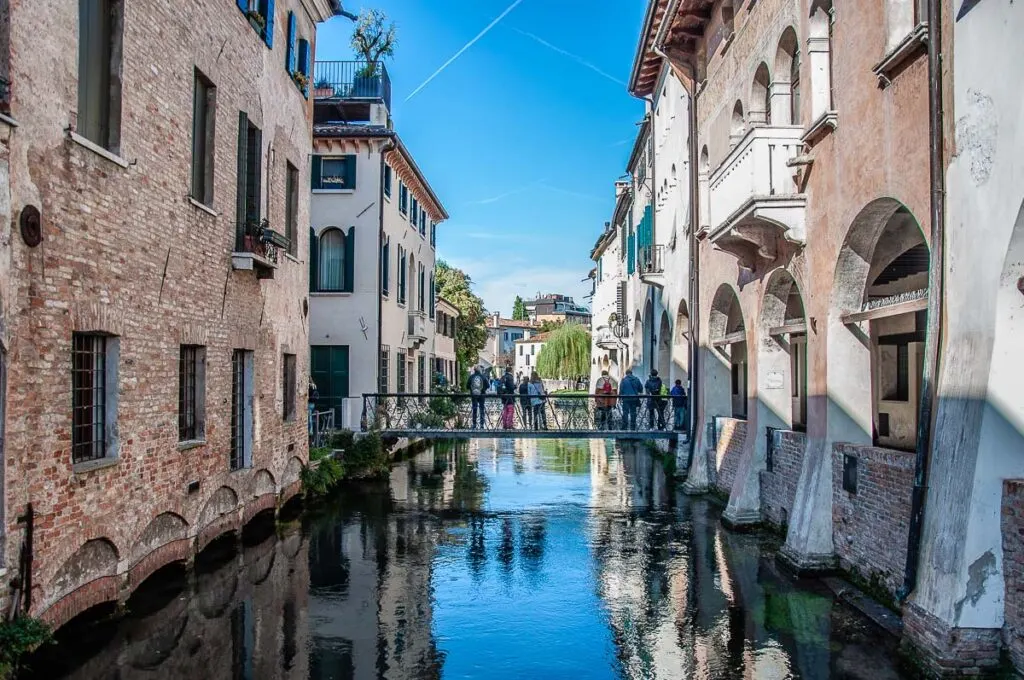
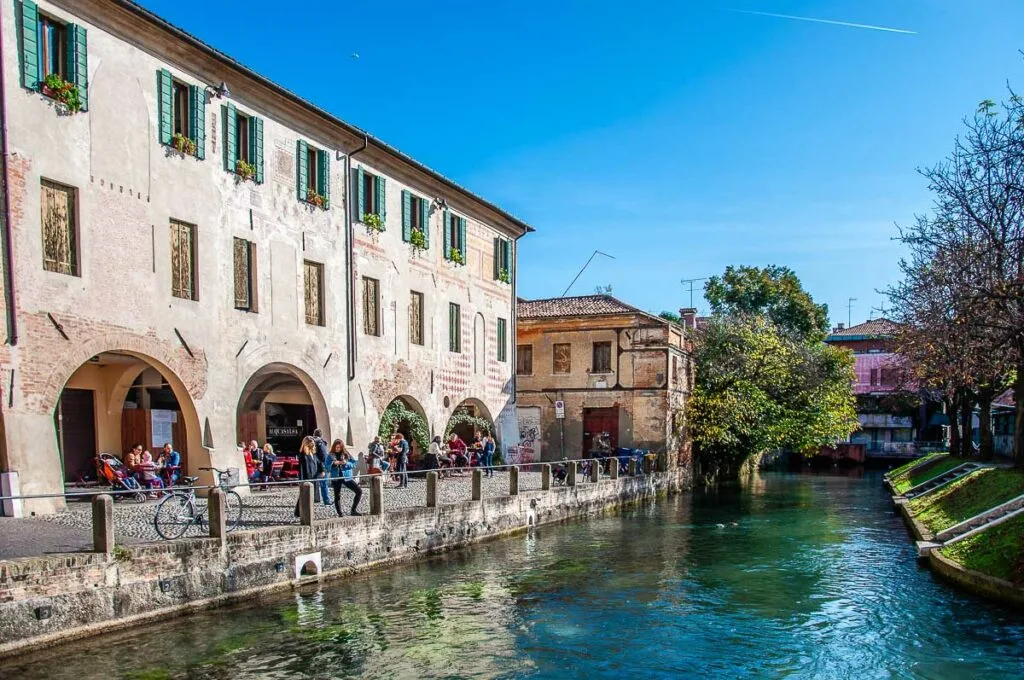
So, to help you plan your trip to Treviso, I have researched, photographed, and written this ultimate travel guide. The information in it is organised under several topics. For example:
- Is Treviso worth a visit?
- How to reach Treviso and how to navigate it on foot and by public transport?
- What to eat and where to stay in Treviso?
- Which major landmarks, museums, and churches are a must-see in Treviso?
- What hidden corners to explore in Treviso and what day trips to take from the City of Tiramisu?
There are also maps, practical details, and lots of beautiful photos to give you an idea of what to expect. You will also find the best times to visit Treviso, packing suggestions, and how long you should stay here. I have included links to the best guidebooks for the area, the best tours you can take here, as well as a list of the best things to do in and around Treviso.
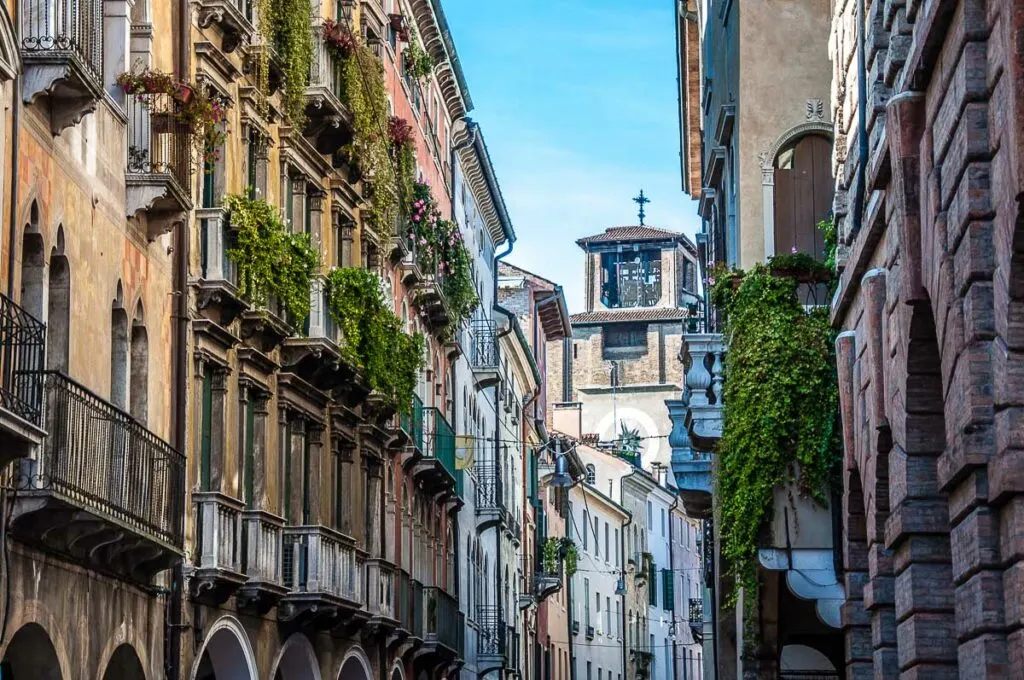

If you scroll right down to the end, you will also find five curious facts about this often-overlooked yet exciting, inspiring, and simply beautiful Italian city.
It’s all based on my numerous visits to Treviso and its surroundings over the last twenty years (six of which I spent living an hour away by train). You can easily scroll up and down this page to focus just on the type of travel details that you need.
Have a look and enjoy your Treviso trip!


The information in this travel guide reflects my first-hand experience. It may contain affiliate links and if you click and make a purchase through them, I may receive a small commission at no cost to you. The ads on this page help me keep this blog free and produce new travel content for you to enjoy. Full details in my Disclosure.
WHERE IS TREVISO?
Treviso is the fifth largest city in the northeastern Italian region of Veneto. It is the capital of the Province of Treviso and it has just over 85,000 inhabitants. The city stands in the Venetian Plain (in Italian, Pianura veneta) – an expansive area of flatlands stretching from the Gulf of Venice in the Adriatic Sea to the Venetian Prealps.
The city’s territory is rich in water springs (locally known as fontanassi) and bodies of water. In fact, Treviso lies at the point where the small river Botteniga splits into several branches (locally known as cagnani) which then flow into Sile – Europe’s longest karst spring river. 90,49 km in length, it crosses the Venetian Plain and flows into the northern end of the Venetian Lagoon.
The adjacent map shows you the exact location of Treviso in Northeastern Italy. You can click on it to zoom in and out to see further details as well as to calculate travel directions.
With a history that stretches back to ancient times, Treviso has a multilayered architectonic and artistic heritage coupled with a lively program of local events and festivals.
The city’s low-cost airport ranks among the top 20 busiest airports in Italy. It stands right on the outskirts of Treviso. When you arrive, there is quick and easy access by bus into town and then by railway and road to many popular destinations in Italy, most notably Venice which is only about 40 mins away by train and around 1 h away by bus from Treviso.
IS TREVISO WORTH A VISIT?
Treviso is one of Italy’s hidden gems. Its name is very well-known on account of the low-cost airport and yet the city is usually bypassed by the mass of people who fly in here but head directly to Venice.
Don’t make the same mistake! Treviso is an elegant, lively city where you can experience the best that Italy has to offer without suffocating crowds. From canalside views to museums displaying outstanding artworks, from pretty cobbled streets to traditional eateries, Treviso has so much to offer.
The historic centre is very walkable and a pleasure to explore. There is a good number of landmarks to keep you busy over a couple of days without getting overwhelmed or bored. And the well-connected train station gives you plenty of choices for trips in the surrounding area. In less than 20 minutes you can visit historic towns such as Conegliano and Vittorio Veneto. In less than 40 mins you can reach Venice and Padua. And in an hour or so you will be arriving in Vicenza, Bassano del Grappa, and even Udine in the neighbouring region of Friuli Venezia Giulia.
The best thing about Treviso is how relaxed and authentic it is. With Venice succumbing every high season to ever larger crowds, Treviso still preserves its peaceful and quiet character. This smaller Italian city is a gateway to the Italian dolce far niente lifestyle. It really is sweet to do nothing here just walking along the canals, admiring ancient frescoes in imposing churches, and finishing every day with a glorious portion of tiramisu.
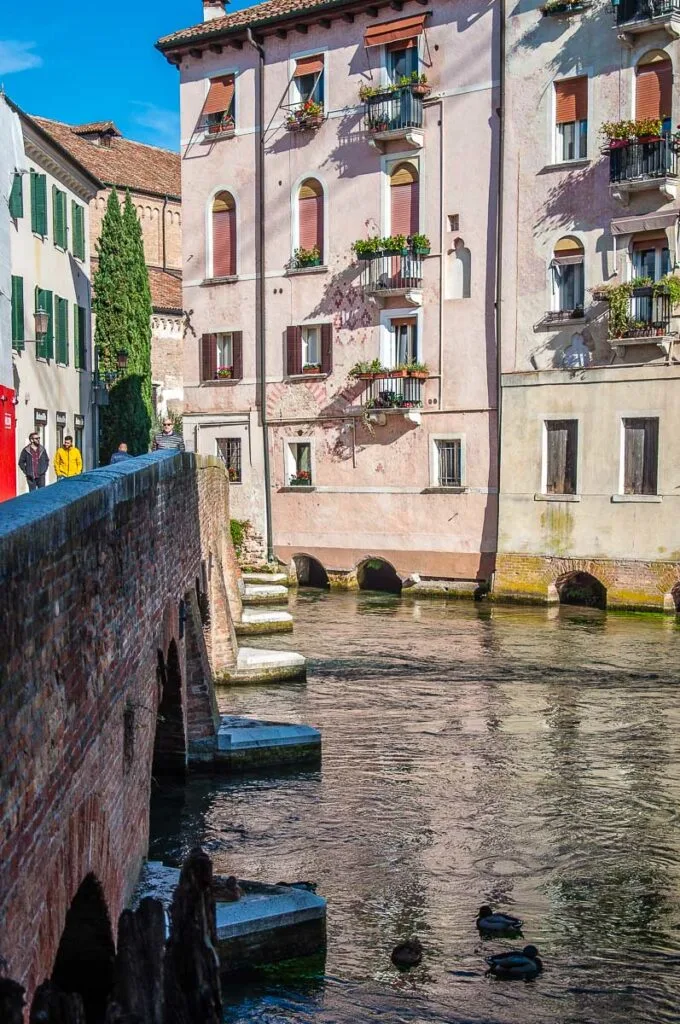
WHAT IS THE MEANING OF TREVISO’S NAME?

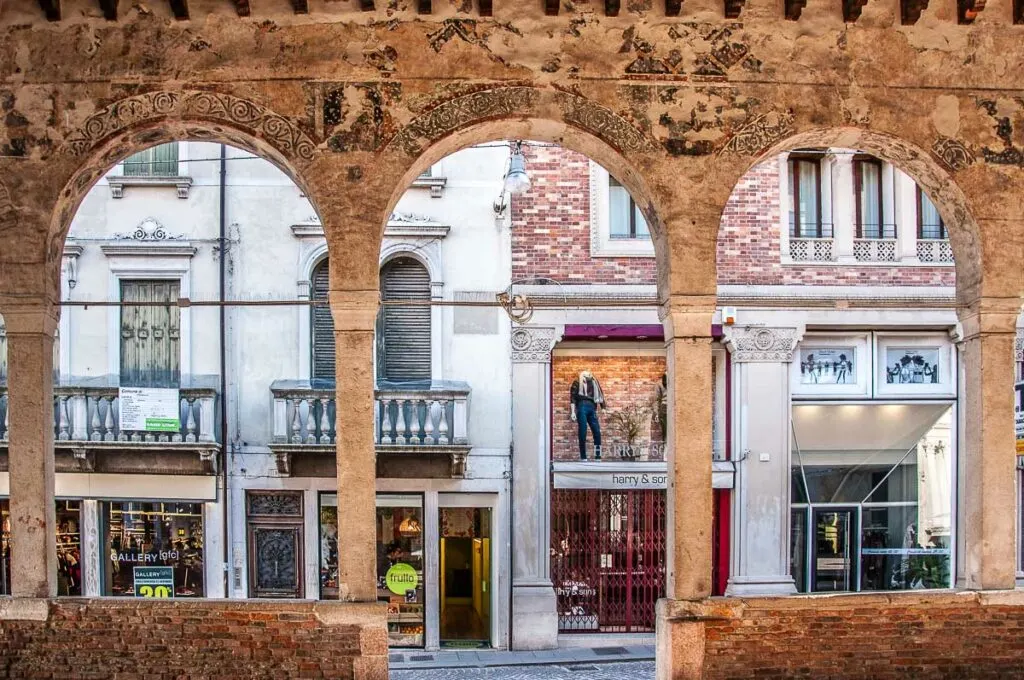
There are several theories about the origins of the name of the city of Treviso. Here are two of the most widely known ones:
Treviso from Tarvisium – according to some researchers the city was originally founded by the Celtic Taurisci tribe who worshipped Apis – the Egyptian bull god of fertility and the underground. In fact, the Proto-Celtic root tarwo means exactly a bull. In this case, Treviso can be interpreted as the City of the Bull Deity.
Treviso from Tervisus (in English, three views or three faces) – according to this less supported by the experts theory, the name of the city refers to the three original settlements from which Treviso grew. They were located at the spots which nowadays are occupied by Piazza dei Signori, Piazza Duomo, and the parish of Sant’Andrea in town. When in Treviso, try to spot the Fountain of Three Faces (Fontana dei tre visi). It stands in front of the Town Hall and it features a male torso with three identical, bearded faces. Alternatively, in the archaeological section of the Museum of Santa Caterina, you can see a small bronze figure of the goddess Hekate represented as a female deity with three heads.
In the Middle Ages and the Renaissance, Treviso was also referred to as the Urbs Picta (in English, Painted City). This was a moniker reserved for Italian cities with lavishly frescoed facades that made the urban environment feel like an open-air art gallery.
Nowadays, Treviso has several newly coined bynames, some of which have a strong marketing persuasion. For example, Little Venice of the Mainland (on account of the city’s numerous canals) and City of Art and Water (due to the outstanding if little-known artworks you can admire here and the abundance of rivers, springs, and canals that give Treviso its character).
BEST AIRPORTS FOR TREVISO
Treviso has its own airport – Treviso Airport Antonio Canova. Its airport code is TSF and its official website is at this link.
This is a small yet busy airport. Many low-cost airlines use it heavily for its proximity to Venice. Incredibly easy and quick to navigate, Treviso Airport is very close to the historic centre of the city. You just need to take either Treviso AirLink or Bus Line 6.
Buses run at regular intervals. The journey is very swift and takes between 10 and 15 mins. You can get off at the train station – Treviso Centrale – and the historic centre begins just opposite it.
Another option is to fly to Venice Marco Polo Airport. Its airport code is VCE and its official website is at this link. This is a large, busy, and elegant airport that deals with a big number of flights from all over the world all throughout the day. Easy to navigate, Venice Airport has many facilities, numerous shops, and several cafes and eateries.
Getting from Venice Marco Polo Airport to Treviso is not difficult. However, it is a little less straightforward and more time-consuming than getting to Treviso from the city’s own airport.
You can either:
- take bus 15 or bus 45 from Venice Marco Polo Airport to the train station in Mestre. Once there, get a train to the railway station Treviso Centrale. You can check the bus timetables on the ACTV website and the train timetables on either Omio, ItaloTreno, or TrenItalia.
- book a private transfer.
Have a look at this blog post for more details about travelling between Treviso and Venice:
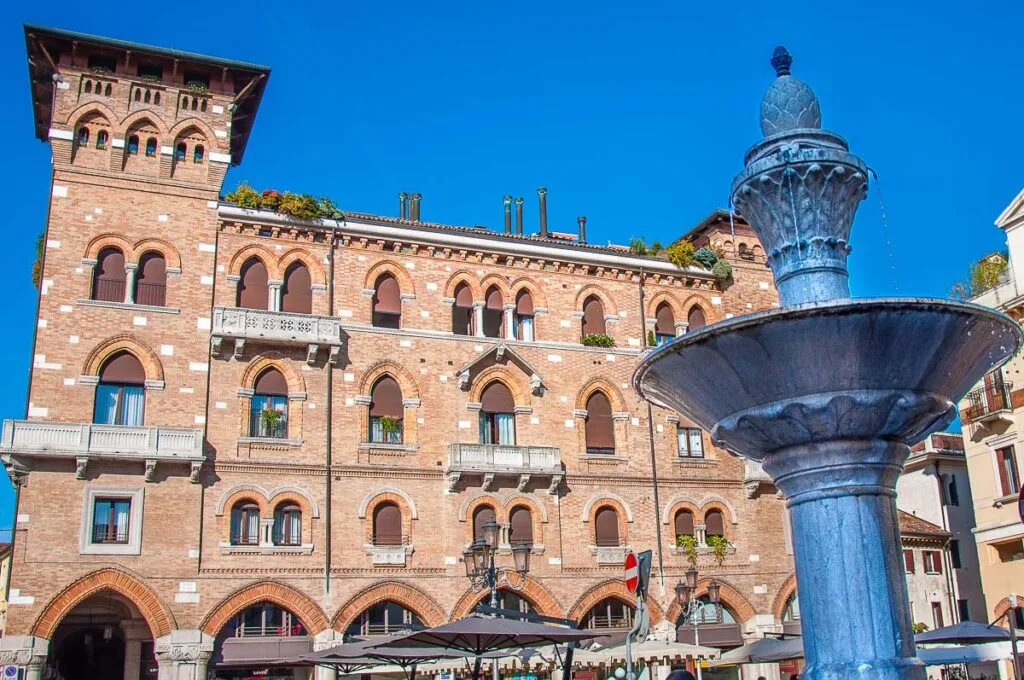
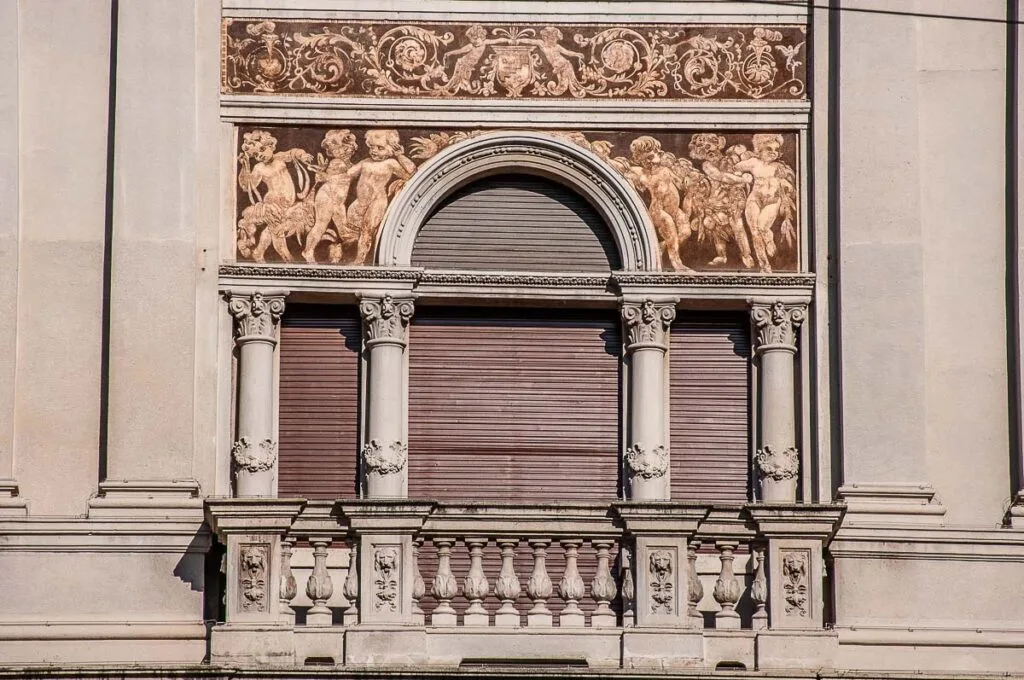
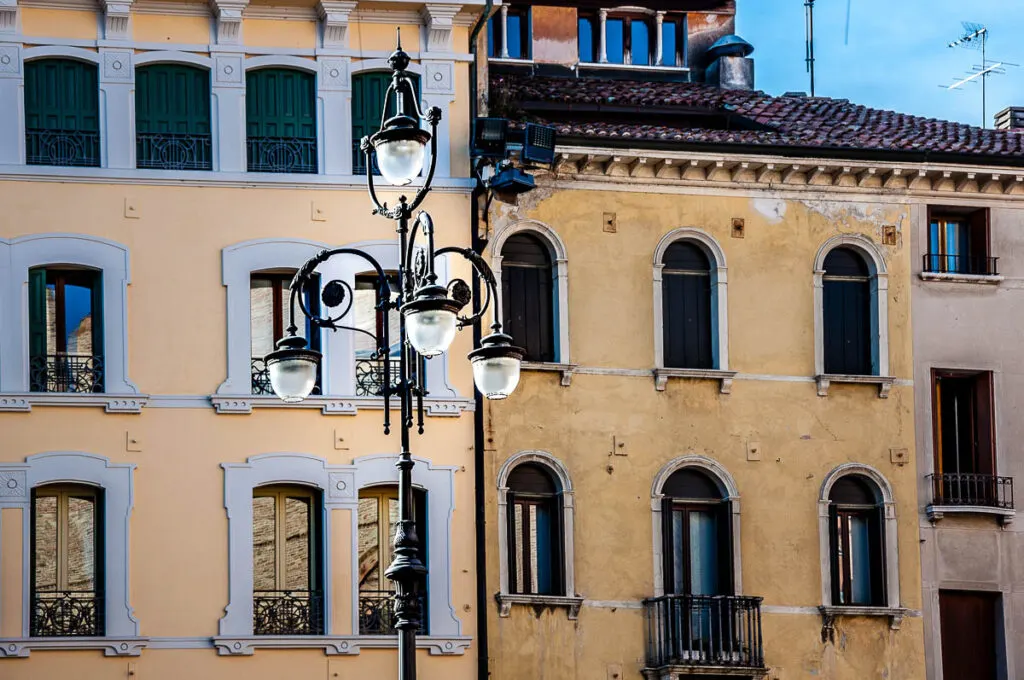
HOW TO REACH TREVISO?
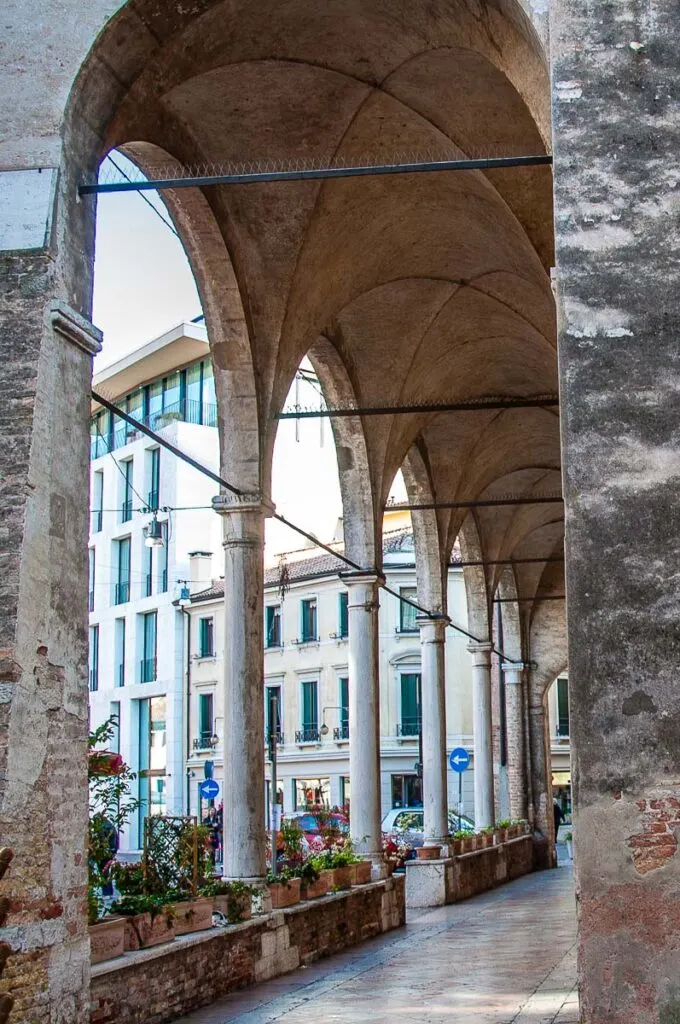
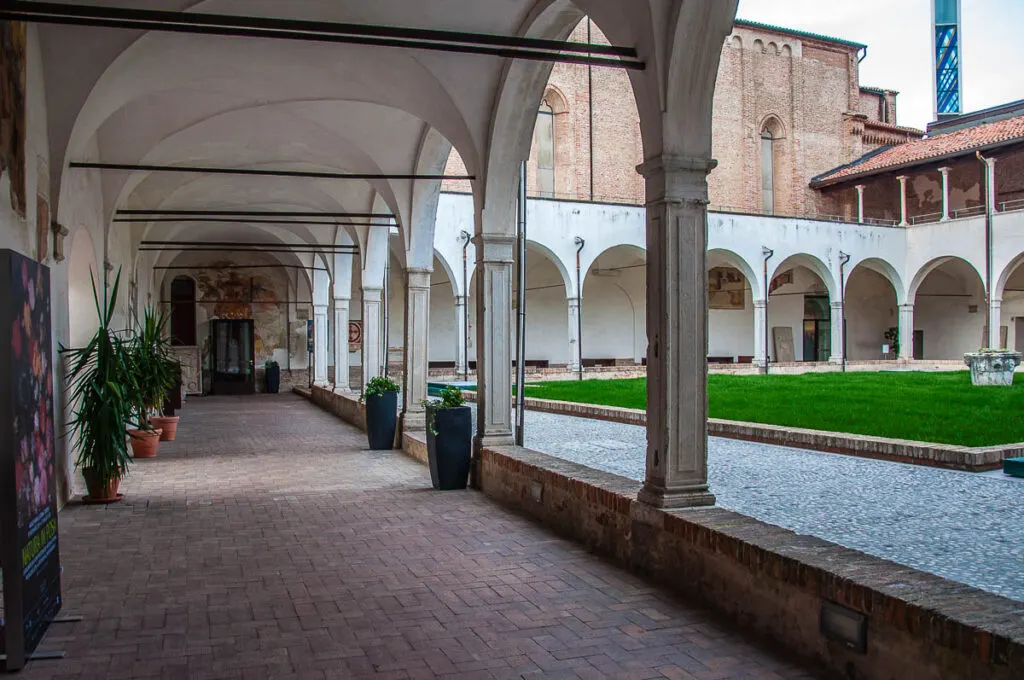
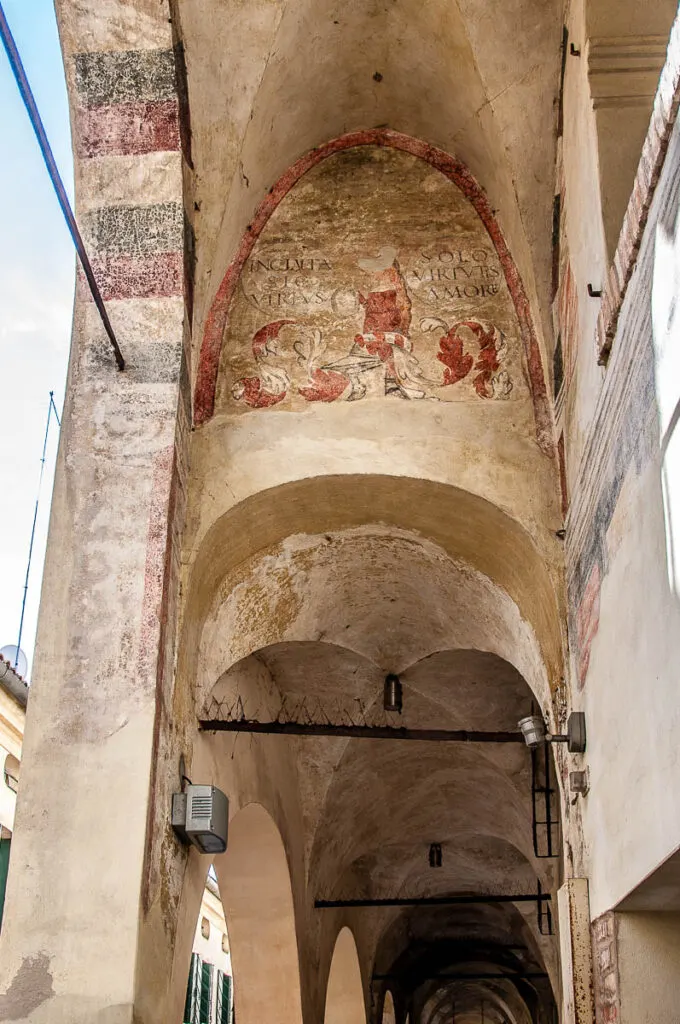
Treviso is very easy to reach by railway and road from anywhere in Italy and abroad.
High-speed and regular trains connect Treviso throughout the day to many towns in the region of Veneto and major cities all over Italy. The city is on the Venice-Udine, Venice-Belluno, and Vicenza-Treviso railway lines. You can check timetables and book your tickets on:
- Omio – which pulls up results for both state-run and private railway companies in Italy;
- TrenItalia – which covers the state-run train network of Italy.
Here are some sample travel times by train from nearby Venice and other Italian cities to Treviso’s main train station, Treviso Centrale:
- Venice to Treviso – from 31 mins;
- Mestre to Treviso – from 18 mins;
- Padua to Treviso – from 39 mins;
- Vicenza to Treviso – from 1 h 2 mins;
- Udine to Treviso – from 1 h 14 mins;
- Belluno to Treviso – from 1 h 25 mins;
- Verona to Treviso – from 1 h 32 mins.
- Milan to Treviso – from 2 h 47 mins.
You can drive to Treviso from anywhere in Italy, too. Toll roads (called autostrada, sing. and autostrade, pl. in Italian) connect the city to other large Italian cities and smaller towns. Here are the autostrade you can use here:
- A27 (known as Autostrada d’Alemagna) – it runs from Mestre (Venice’s mainland borough) to the Alps and it passes by Treviso.
- A4 (known as La Serenissima) – it connects Turin to Trieste via Milan and Venice and it passes through the Province of Treviso.
- A28 – a very short toll road which connects some of the smaller towns in the Province of Treviso to the adjacent northeastern Italian region of Friuli Venezia Giulia.
This useful website will give you up-to-date information about navigating Italy’s autostrade, the current traffic conditions, as well as how to calculate and pay the toll fees (called pedaggio in Italian).
If you are planning to visit Treviso by car, it is advisable to familiarise yourself with the city’s ZTL (in Italian, zona a traffico limitato). This is a zone with restricted traffic which covers roughly Treviso’s historic centre. You can traverse it by car only if you have a special dispensation obtained in advance. Otherwise, there are steep fines in place. This website provides full information about Treviso’s ZTL, its entry points, limits, and conditions for access. It’s in Italian, so you can use Google Translate to get the gist of the information.
If you have booked accommodation in the historic centre and you are arriving by car, contact your hotel in advance and ask to see if it can provide you with a temporary pass giving you the right to drive within Treviso’s ZTL.
HOW TO NAVIGATE TREVISO?
Treviso is a small city that has grown around its medieval nucleus – the walled centro storico. Crisscrossed by cobbled streets and several canals, the historic centre is best traversed on foot. Distances are short and walkable. All the main sights here are just around the corner from one another.
Walking around historic Treviso is a great way to immerse yourself in the city’s past and appreciate its authentic environment – all frescoed walls, long porticoes, and charming canal views.
The main train station – Treviso Centrale – is next door to the historic centre thus negating any need to get a bus or any other mode of transport if you are in Treviso for the day and want to see the main landmarks.
If you are planning to stay here longer and your accommodation is outside of the historic centre, then you can rely on the local public transport provider – Mobilita di Marca. Consult its website (in Italian, English or French) to see the routes, timetables, and fares. If you need to get a taxi, then this website has the details that you need. It’s in Italian so if need be, you can use Google Translate to get the gist of it.
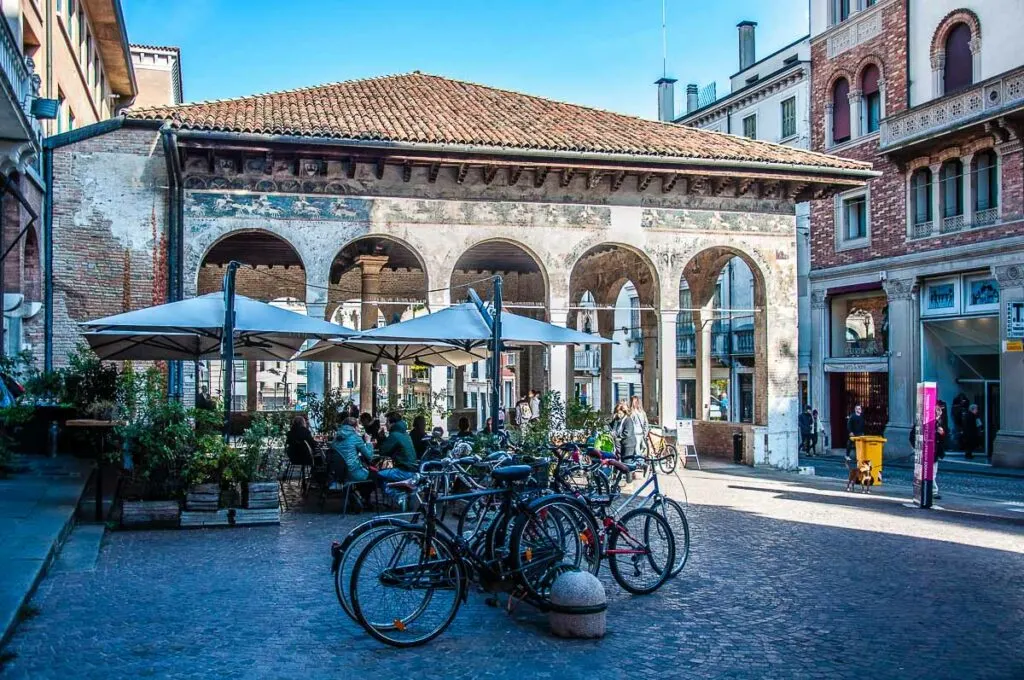
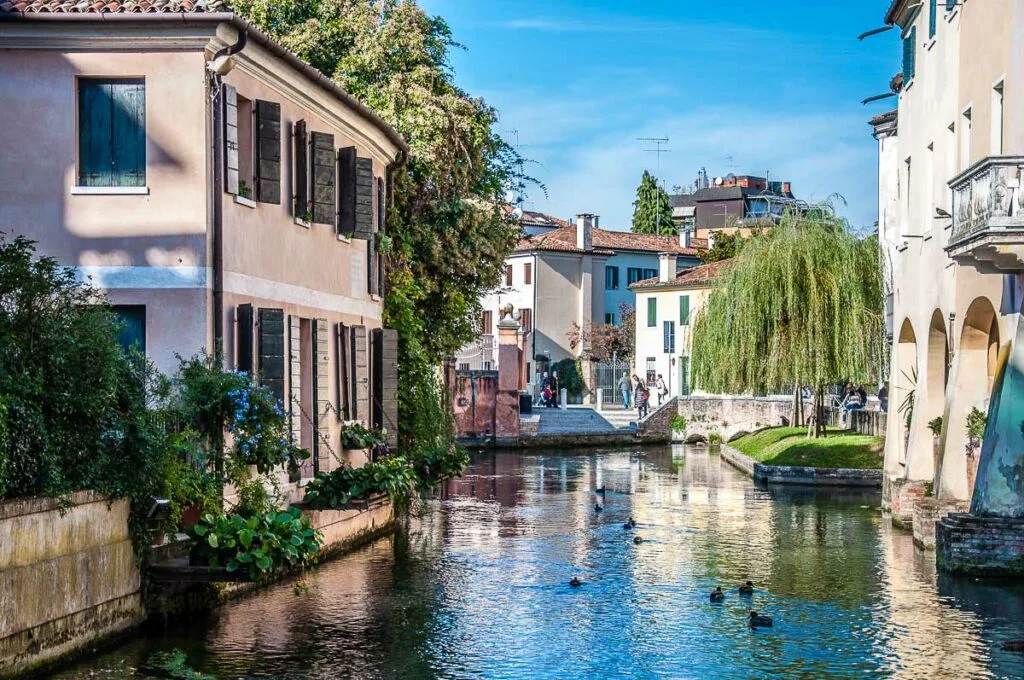
WHAT TO PACK FOR TREVISO?

The most important thing to pack for a visit to Treviso in any season is a pair of comfortable shoes. There are many cobbled streets and all types of uneven surfaces in the historic centre here. You will also spend time standing up and moving at a variable pace over long periods of sightseeing.
So, make sure that your feet are as comfortable as possible. Choose shoes with a good grip that cushion your heels and support your ankles at all times.
In winter, bring warm layers to stave off the chills produced by the high levels of humidity and yet can be quickly peeled off when the sun makes a not-rare appearance. In summer, bring a hat, sunglasses, and suncream to counteract the bright sunlight that bounces off the large facades and floods the wide piazzas. Invest in fabrics that dry quickly, are crinkle-free, and let your skin breathe through them. It may be a good idea to also pack a bug repellent, albeit a spray, a roll-on or a bracelet. A rainproof jacket will be handy in autumn when rainy days are plenty.
Even when it’s very hot, make sure that your outfits are appropriate for city living and respectful sightseeing. Shoulders and knees should be covered in Italian churches. In Italy, exceedingly cropped, tight, and/or revealing clothes are not acceptable attire on the street as well as when visiting important landmarks.
BEST TIMES TO VISIT TREVISO
Treviso is a great place to head to in any season. Thanks to its low-cost airport, this small Italian city is easy and inexpensive to reach from anywhere in Europe and the perfect destination for an impromptu weekend break.
As soon as you feel the need for new experiences, delicious foods, and a deep dive into centuries of history and art, Treviso is ready to deliver all this. Plus, without the suffocating crowds which besiege nearby Venice.
As is typical for the whole of Italy, the shoulder seasons – from the end of March to May and then from the end of September to the start of November – are easily the best times of the year to visit Treviso. Expect average temperatures between 18 and 24 degrees Celsius and some rainy days but mainly clear skies. June is the wettest month of Treviso’s year.
Summers are hot and humid. With temperatures above 30 degrees Celsius, you will be grateful that you have chosen Treviso for your city break in Italy, as many of the streets in the historic centre are lined by long porticoes providing shelter from the sun. These long colonnades help you remain in the shadows as you walk around town. Plus, you can always spend the hottest hours of the day inside the city’s cool museums or take a proper Italian riposo.
Winters in Treviso are mild in comparison with most of Europe. The thermometer will fluctuate from 0 to 7-8 degrees Celsius with extremely rare snowfalls. The Christmas season is especially lively. Expect lots of local events, festive markets, an ice skating rink, and heartfelt celebrations.
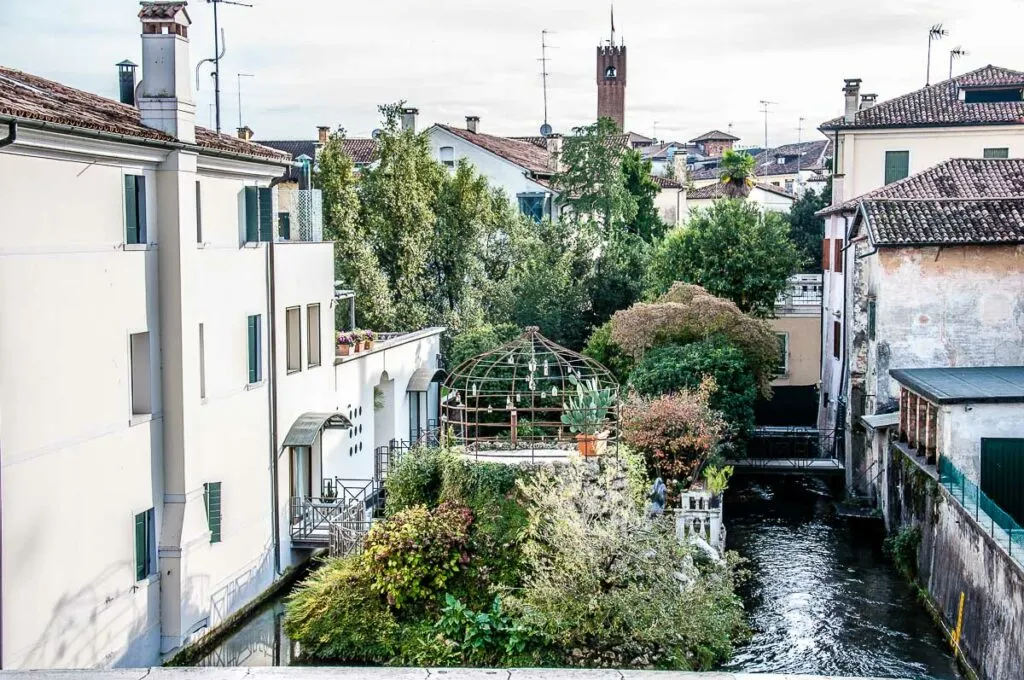
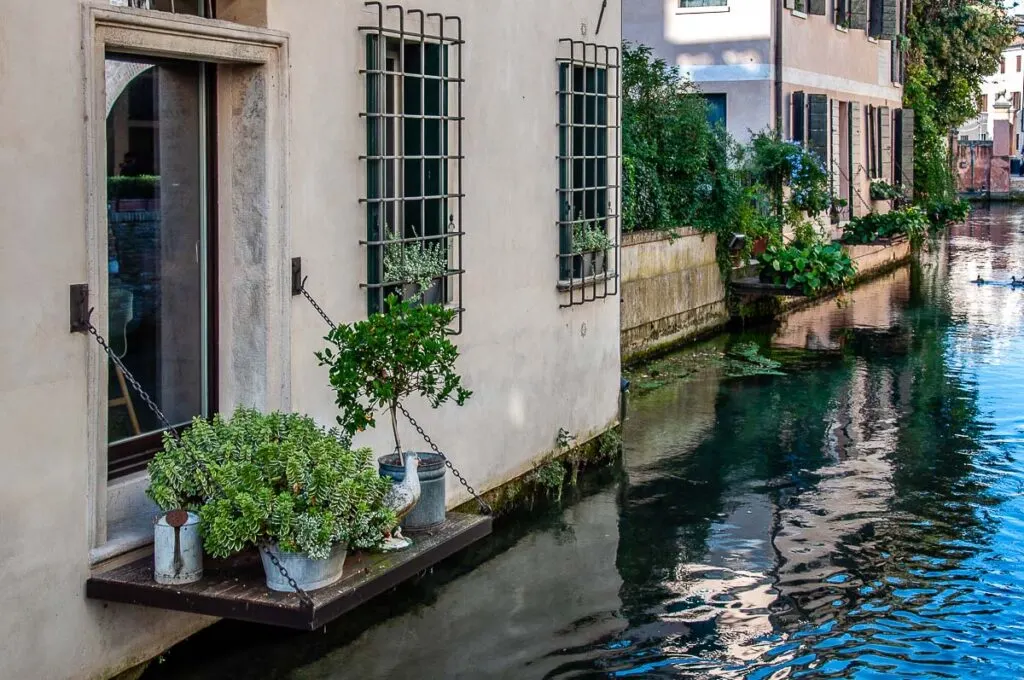
HOW LONG TO STAY IN TREVISO?
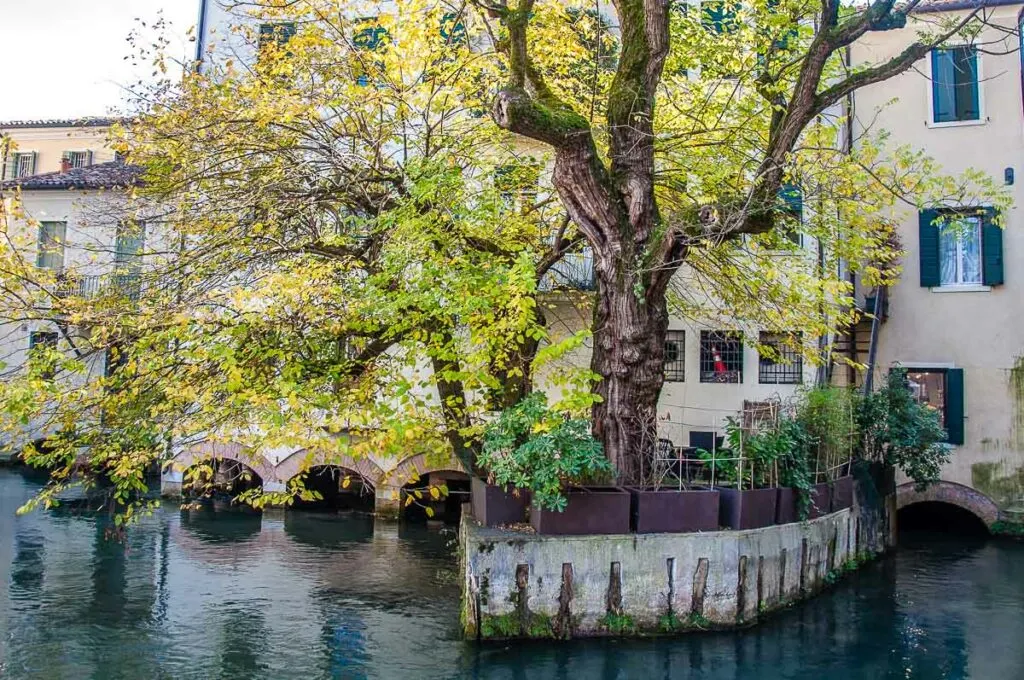
If you are heading to Treviso for a short city break, then two days are perfect to walk all over town and explore its beautiful historic centre in some detail. The city is compact and its main landmarks are close to one another. You can then spend a third day visiting a nearby city, medieval walled town or beautiful village. For ideas, see the Best Day Trips from Treviso section below.
If you are staying elsewhere in this corner of Italy, Treviso is also a great destination for a day trip. Easy to reach by train and by car from many of the large cities in the regions of Veneto and Friuli Venezia Giulia, this is a lovely place to explore from morning til dusk.
Alternatively, you may decide to spend a week in Treviso and use it as a base while travelling every day to a nearby city or sight. This is perfect for those who appreciate the advantages of slow travel and want to delve into many of the lesser-known destinations in northeastern Italy.
WHERE TO STAY IN TREVISO?
There is a nice variety of places to stay in Treviso in any season and for any budget.
You can choose a historic palazzo that nowadays functions as a luxury hotel. You can opt for a comfortable B&B. Or you may prefer a flat with a kitchen to enjoy a home-from-home experience.
All in all, Treviso has a great offering in terms of good to excellent quality accommodation with usually much lower prices than those in Venice. This makes this small Italian city a great place to use as a base, especially during the high season.
If your focus is on sightseeing, then consider staying in the historic centre of Treviso. Arriving with heavy luggage? Then a walking distance from the train station Treviso Centrale is best but don’t stay right next to it as it is not very picturesque. Several of the historic streets are cobbled, narrow and/or with limited access for non-resident vehicles. If you are arriving by car, ask your accommodation for a temporary pass allowing you to drive into the city centre or for a safe place to park outside of it.
Here are some suggestions for places to stay in Treviso. All come highly recommended:
Luxury: Leoni di Collalto Palace, Al Pio Luxury Nest
Mid-Range: Locanda San Tomaso, MyPlace Treviso Vittoria, Locanda Ponte Dante, Antica Dimora Stucky, Le Camere di Palazzo Bortolan
Budget: Centro della Famiglia; Terzopiano; Ai Bastioni Boutique Hotel
Alternatively, use the map included here to get a quick visual idea of the available accommodation options in Treviso, Italy. You can zoom in and out, type in your specific travel dates, and then click on the different price points for detailed information about the hotel you want to know more about.
In addition, have a look at this blog post which explains the different types of accommodation you can book in Italy. It will give you plenty of ideas to look into for the best and quirkiest places to spend the night here:
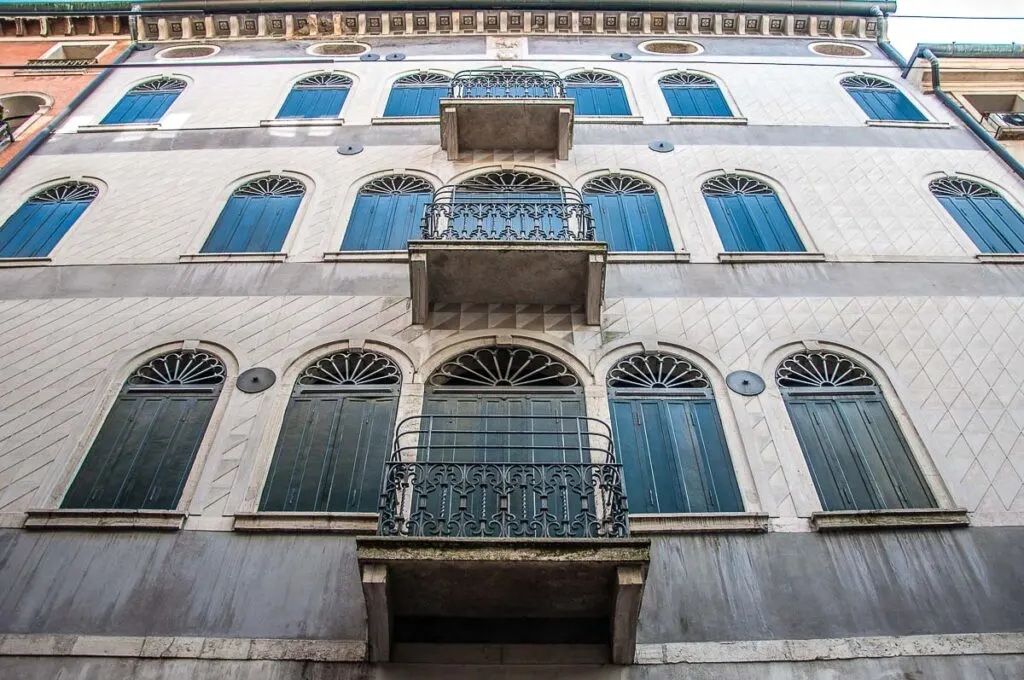
WHAT TO EAT IN TREVISO?
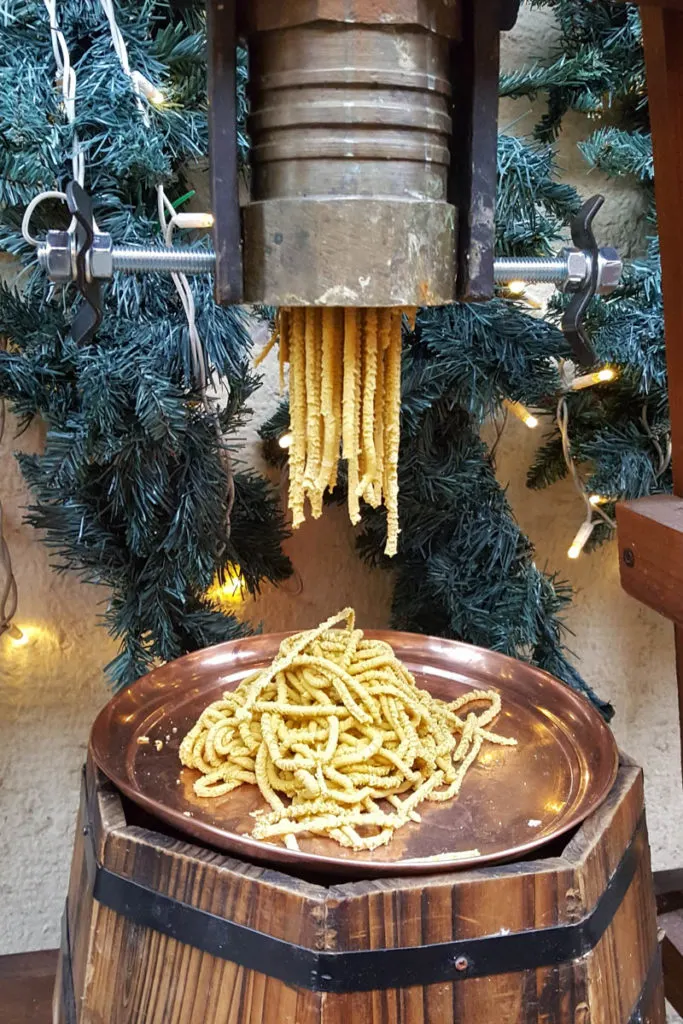

Treviso has a lot to offer to those seeking to indulge their taste buds on a trip to Italy. The city is famous as the birthplace of tiramisu, yet that’s not all that Treviso’s cooking.
The locals are particularly proud of their radicchio rosso. This is a type of red chicory. Its crunchy texture and slightly bitter taste lend themselves well to a myriad of local dishes, for example, risotto al radicchio rosso. There are two variants – early (precoce) and late (tardivo). The late one is more prized. You will recognise it by the shape of its leaves. They look like thick lances that sprout upwards from the chicory’s base and curl together at the top. At the bottom, the leaves are bright white. Their edges at the top are deep-red/almost purple colour. Treviso’s radicchio rosso has a PGI (protected geographical indication) status. This means that it can only be grown in certain places and its qualities are tightly related to that specific place of origin. The plants undergo a complex process of growing in open fields and further maturation in tanks with groundwater. This is what helps them develop their startling white colour and tempers their bitterness.
Bigoli is a type of thick, long round strands of pasta typical for the region of Veneto (of which Treviso is part). Try them with sardines and onions, with duck sauce or with sausage and radicchio. If you are after little-known beyond their point of origin dishes then order some sopa coàda – pigeon meat layered with bread and cheese and drenched with pigeon broth. If you love sliced meats, give sopressa a try. This aged salami is made of pork meat and lard and comes in a garlic-flavoured version, too. Frittura di pesce is perfect for those who love seafood. Expect a mix of battered and fried fish, prawns, and squid usually served with polenta and lightly fried julienned vegetables.
Eat your weight in tiramisu but also leave a bit of space for torta fregolotta – a type of shortbread with a coarse texture. If you want to taste something a bit different, then try pinza – a dense and gloopy cake with rustic origins.
Treat yourself to a glass of excellent prosecco from the nearby Prosecco Hills of Conegliano and Valdobbiadene. Finish it all off with a cup of coffee, expertly served in any small cafe or bar you will walk past in Treviso.
Treviso’s cuisine is explored in excellent detail in the seminal book La Cucina Trevigiana: Storia e Ricette by the renowned culinary expert and writer Giuseppe Maffioli. It’s a great investment for real foodies!
BEST THINGS TO DO IN TREVISO
There are many exciting things to do in Treviso to suit all types of travellers and personalities. If you are looking for a travel experience that is just off the beaten track and makes you feel enriched inside, this small city in the northeast of Italy is a great destination to head to.
In a small amount of time here you can delve into history, architecture, and art and finish it all off with a delicious meal to fondly reminisce over for years to come. Walking through the historic centre – with its frescoed facades and water canals – is already a cultural experience in itself. You will be generously rewarded with beautiful corners to photograph without having to queue or rub shoulders with thousands of other people.
Treviso is one of those places where things happen in a relaxed and easy manner. Where you can walk from one sight to the next without feeling like you have to rush, rush, rush. Where every step reveals another gorgeous detail which peels yet another layer of understanding of how the city developed over the centuries. It is a destination that makes you feel like you have discovered something special and you ask yourself: ‘How did I not know about this place before?’.
Have a look through the headings further down this travel guide. They outline the major landmarks, museums, and churches you can visit in Treviso. In addition, here I have summarised the best things you can do in this small city that has so much to offer:
Sightseeing and Art Appreciation – Treviso has several must-see museums, historic piazzas, and churches with priceless art. From ancient tribes and Roman artefacts to medieval frescoes and Renaissance masterpieces, here you can come face-to-face with some of the pinnacles in the production of art in this corner of Italy. In the Duomo alone you can see an altarpiece by Titian and frescoes by Pordenone, but Treviso is so much more than simply paying homage to the big names in art. Here you can also see and enjoy masterpieces by lesser-known yet incredibly original Italian painters, starting with Tommaso da Modena and going all the way up to a cohort of artists of the 19th and 20th centuries. Treviso is also the birthplace of many creative minds, so walking around town you can admire the environment which inspired their work. Among them, for example, is Girolamo Trevigi – a Renaissance sculptor and painter who was also the military engineer of the English King Henry VIII.
Eating – with lush hills carpeted with vineyards and flat stretches of land planted with radicchio, peas, and asparagus, the Province of Treviso offers all the components of a great foodie scene. Local dishes – perfected throughout the centuries – can be enjoyed in a myriad of eateries, from small family-run trattorias to high-class restaurants. Abundant fresh zero km vegetables, a huge selection of cheeses (don’t miss the casatella trevigiana), fragrant white polenta, and a great variety of freshwater fish make eating in Treviso an unmissable experience. Take every opportunity to savour the local flavours!
Walking and Nature Exploring – Treviso is a very walkable city, especially its historic centre where you can stroll along the centuries-old defensive walls and the picturesque canals. Right next door to the city, you can also spend time enjoying the paths running through the Regional Park of the River Sile. Here you can find old mills, floating bridges, marshy areas, and even an eerie but very picturesque boat cemetery (in Italian, cimitero dei burci). You can explore the park on foot, by bike, and by canoe. Right in the park’s heart, you can also visit Oasi Cervara – Sile’s last big swamp and home to rare amphibians and birds (including kingfishers). If you like caves, then head to Grotte di Oliero or Grotte del Caglieron. Both are about an hour away by car from Treviso (albeit in different directions from one another).
Shopping – Treviso has its fair share of high-street shops and small artisanal boutiques. Perusing their offerings is always a lovely way to while away an hour or two. If you are serious about shopping opportunities in this corner of Italy, head to the Noventa di Piave Designer Outlet. It’s only half an hour away by car from Treviso and has over 150 designer stores.
Day Trips – Treviso is a great base for exciting day trips in the northern Italian regions of Veneto and Friuli Venezia Giulia. I have provided specific destinations under the Day Trips and Hidden Gems sections below.

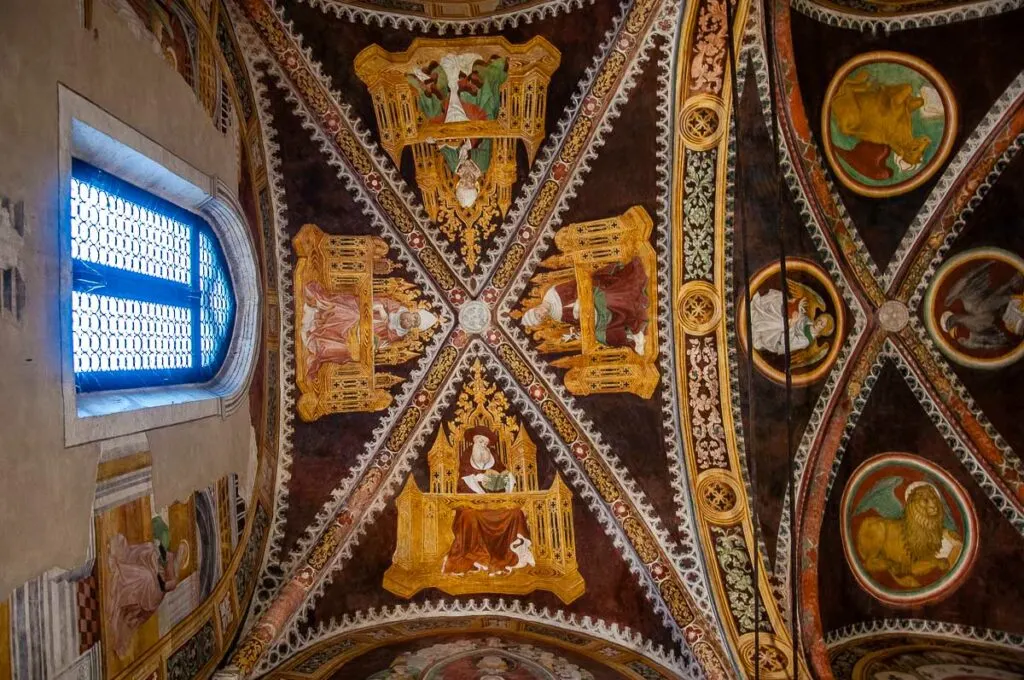


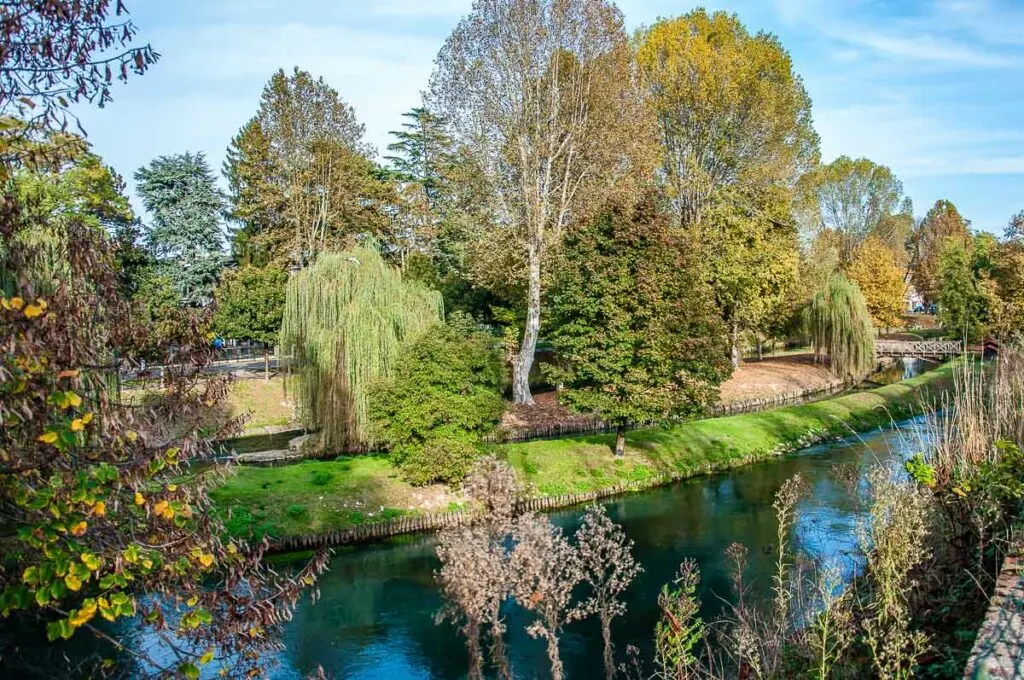
MAJOR LANDMARKS IN TREVISO

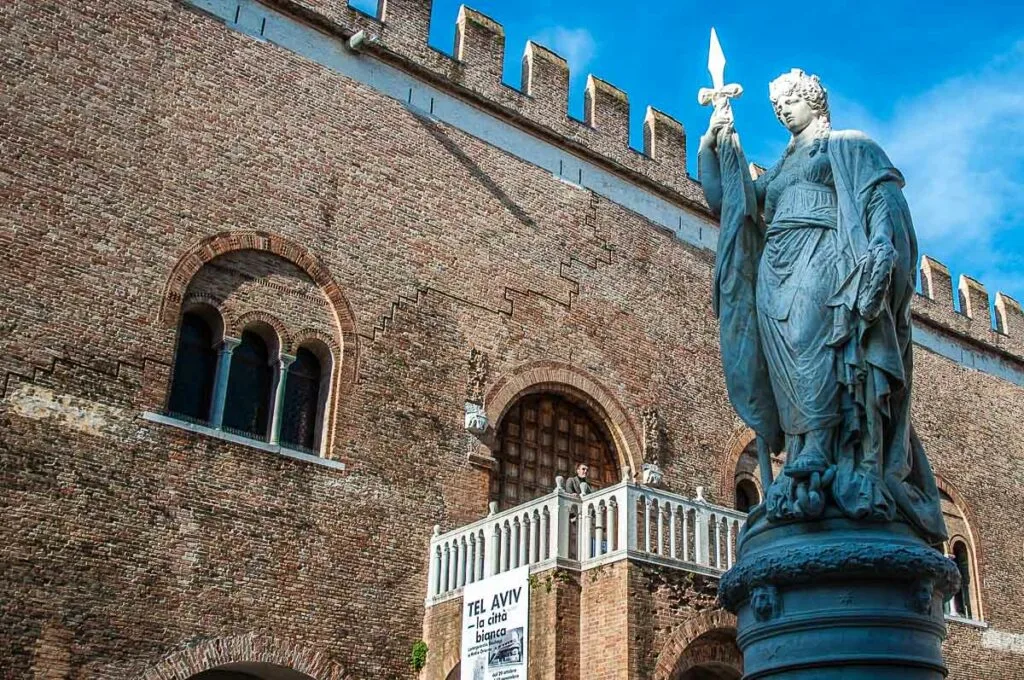
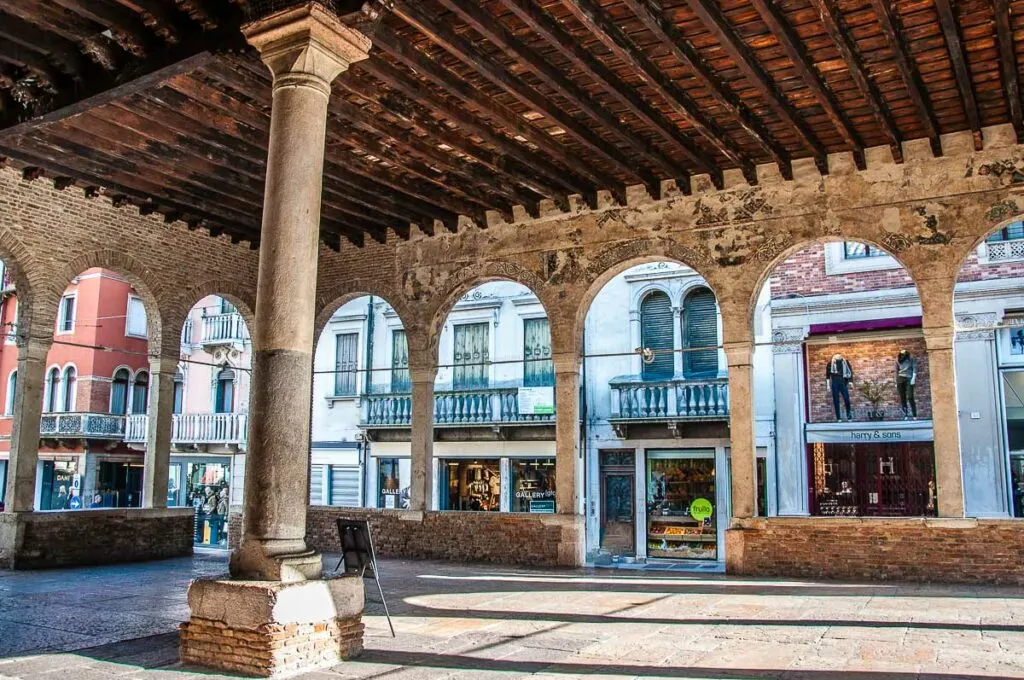
Calmaggiore – Treviso’s main street connects the city’s Duomo to the square of Piazza dei Signori. It was first laid in Roman times and its current name is a corruption of the Latin words callis maior or main road. Flanked by imposing historic buildings and numerous shops, it’s a great street to walk up and down to imbibe the local vibe.
Piazza dei Signori – this is Treviso’s expansive main square. It’s flanked by an imposing group of adjacent historic buildings: the gothic Palazzo dei Trecento (also known as Palazzo della Ragione), Palazzo del Podesta with the 13th-century Civic Tower, and Palazzo Pretorio with its 17th-century facade.
Piazza Independenza – right next to Piazza dei Signori and separated from it by the Palazzo dei Trecento. Looking at the palazzo from this side, you can see a deep line zigzagging down its wall. It marks the boundary between the original and the restored masonry after the palace was half-destroyed by an Allied Forces bombardment in 1944. A large monument – Monumento ai Cadutti – stands at the heart of this central square. Dedicated to those who gave their lives for the Motherland, the sculptural composition is dominated by a beautiful and dignified lady with a turreted crown on her head and a sword in her hand. While many think that the marble lady is a personification of Italy, others insist that she represents the Province of Treviso. Curiously, she has come to be known as the Teresona by the citizens of Treviso.
Both Piazza dei Signori and Piazza Independenza host many lively cafes and are the perfect place for people-watching. Especially in the early evening when trevigiani come out to meet friends and enjoy a stroll known in Italian as la passeggiata. Large events take place here, too throughout the year. From a Carnival parade that attracts people in their thousands to the Tiramisu World Cup, you can enjoy so many unforgettable moments at Treviso’s two main piazzas.
Loggia dei Cavalieri – erected between 1276 and 1277, this rectangular building was the meeting place of Treviso’s noblemen. They would congregate here to discuss the topics of the day and to entertain themselves with music and other such suitable for their time activities. The structure is surrounded on three sides by a sequene of open arches. Its walls are decorated with a cycle of faded frescoes inspired by French epic poems which were very popular among Treviso’s cavalieri. The Roman de Troie which retells the happenings of the Trojan War was particularly well-known, especially as according to one of the local myths, Treviso was founded by a Trojan nobleman. Nowadays, the Loggia dei Cavalieri is sometimes used to hold local events. At certain points in the past, it also functioned as a timber warehouse and even as a funerary shop.
TREVISO AND ITS DEFENSIVE WALLS
Treviso is one of the most beautiful walled towns to visit in this corner of Italy. It was first fortified during Roman times. By the 14th century, it had a massive ring of defensive walls with eleven gates in them. Between 1509 and 1518, however, the walls were significantly remodelled and refortified and the gates were reduced to three. This was done to protect the city from attacks during the War of the League of Cambrai in which Treviso fought on the side of the Republic of Venice.
The walls and the water canals surrounding the city turned it into an impenetrable fortress. Nowadays, you can go for a walk along this defensive perimeter. A portion of it follows a wide path flanked by trees atop a tall embankment. Being up there allows you to enjoy lovely views of urban gardens and green spaces.
As you stroll along, you will walk past the three surviving 16th-century gates. They are:
Porta Altinia – built between 1514 and 1515, this is the oldest of the three gates. It stands near the Treviso Centrale train station.
Monumental Gate of Santi Quaranta – with an architectural outline inspired by the Roman triumphal arch, this Renaissance gate was erected between 1516 and 1517 and replaced an earlier medieval structure. It stands near the Church of Sant’Agnese.
Monumental Gate of San Tomaso – built in 1518, this gate is the most opulent of the three. It is crowned by a statue of St. Paul and decorated with a large bas-relief of the Venetian lion. Curiously, the gate is named after Thomas Becket – the archbishop of Canterbury who was assassinated by the knights of King Henry II inside Canterbury Cathedral. A medieval fresco representing this tragic event which took place in England but reverberated all across Catholic Europe nowadays is preserved in Treviso’s Diocesan Museum
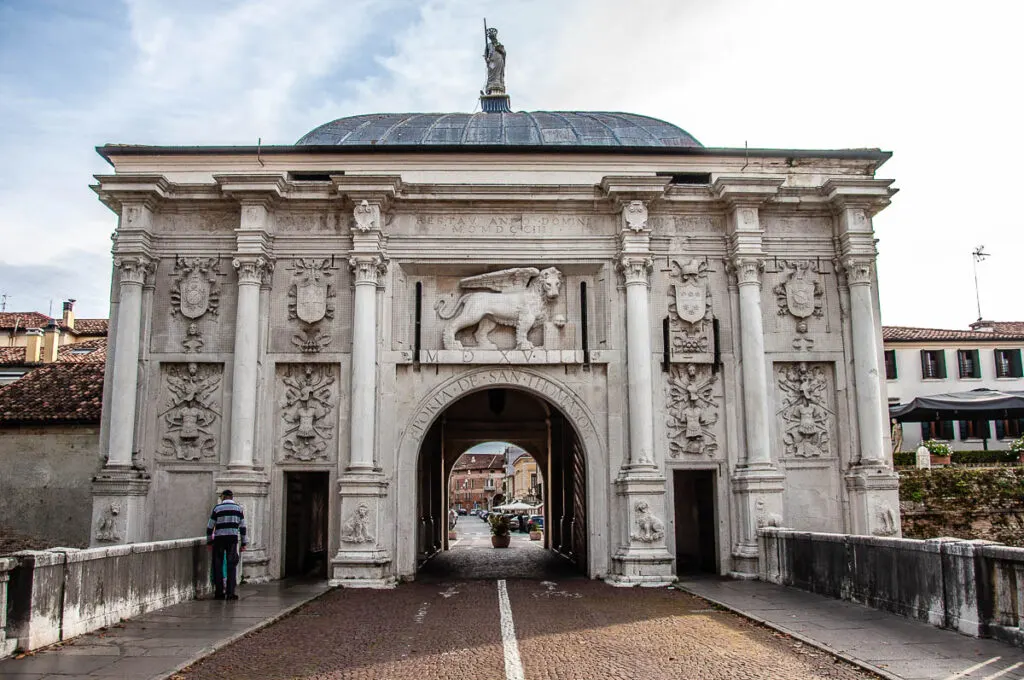

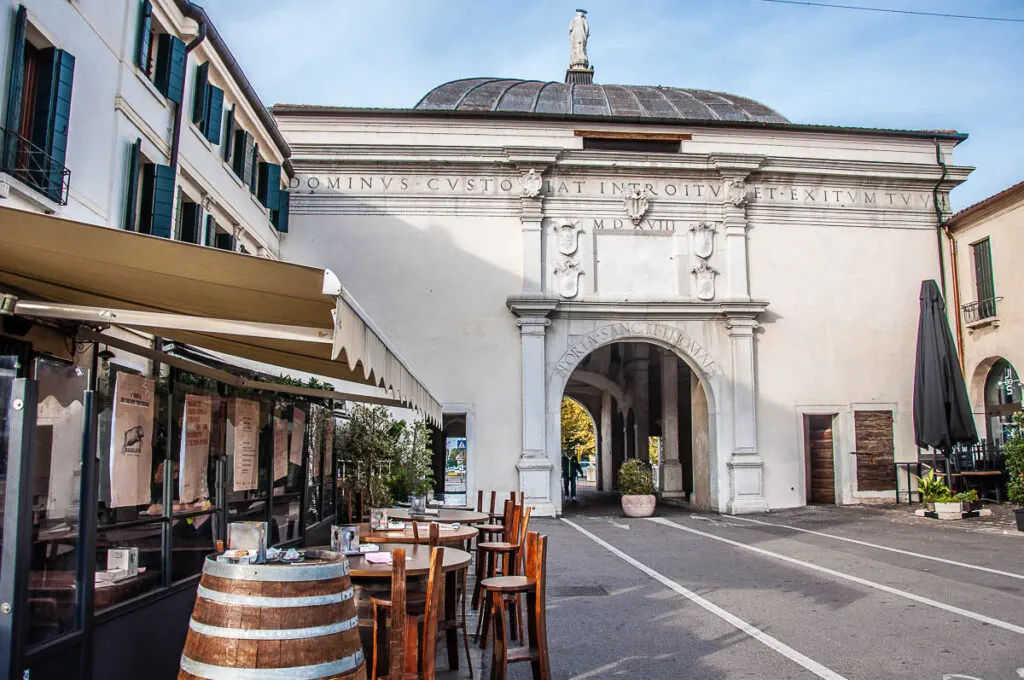
TREVISO AND ITS CANALS
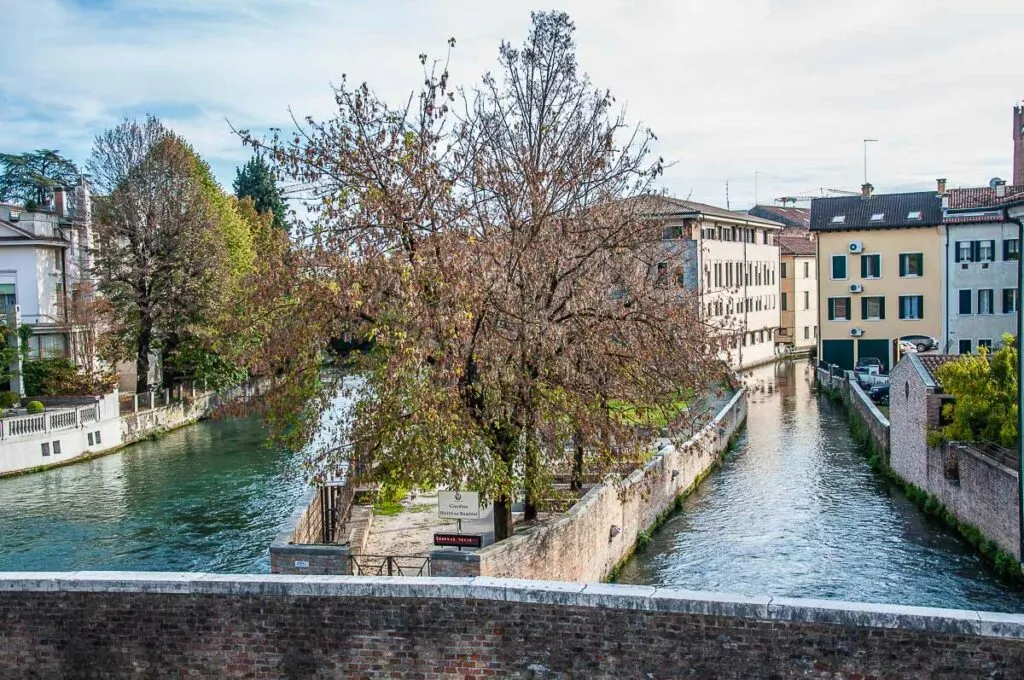
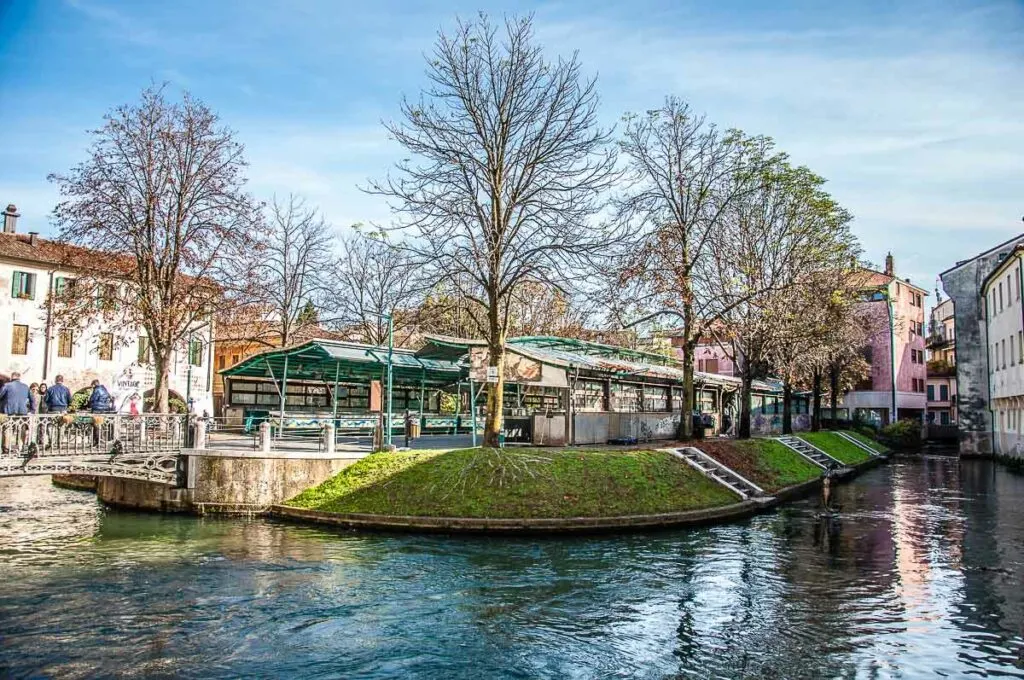

One of the first things you will notice about Treviso is that it’s crisscrossed by wide canals. Water is abundant here and has played an important role in shaping the city’s character. Known as cagnani, Treviso’s canals deserve a special mention in this travel guide.
The word cagnan comes from the contraction of canal and bagnare (in English, to bathe or to wash) and as such it means a canal which bathes the city. Upon reaching the historic centre of Treviso, the River Botteniga splits into three branches at Ponte Pria – a long bridge with seven arches and 16th-century water locks. Locally, these three canals are known as:
Cagnan Grande (also known as Canale della Pescheria) – 0.7 km long, it’s flanked by some of the most beautiful historic houses in Treviso. At its heart stands a small island where the city’s fish market (or pescheria in Italian) is held in the morning from Tuesday until Saturday. Come early for the freshest catch!
Cagnan Medio (also known as Buranelli) – 0.71 km long, and flanked by endless porticoes, this canal features in Treviso’s most iconic photos. In the 16th century, merchants from the Venetian island of Burano established a warehouse next to the cagnan, which inspired its moniker Buranelli. Up to the Second World War, this was also where Treviso’s washerwomen would congregate to wash clothes in the canal’s limpid waters.
Roggia (also known as Siletto) – 1.17 km long. Along this canal, you can see some of Treviso’s medieval houses with their porticoes built over the water. In the past, Treviso’s scorzèri or leather tanners had their workshops alongside the canal.
There are other smaller canals here fed by the River Botteniga, for example, Cantarane. Less than half a km long, nowadays, it’s almost entirely underground.
The canals flow past and underneath the houses in the historic centre. In the Middle Ages, they were part of the hydraulic defences of the city. Nowadays, they make Treviso very picturesque. When in town, follow the canals for pretty views, hidden corners, and the chance to steal glimpses of local life.
BEST MUSEUMS AND ART GALLERIES IN TREVISO
Museum of Santa Caterina – this is an exquisite museum which combines an art gallery and an archaeological division. If you only have time for one major sight in Treviso, let this be your top choice. The museum is housed in a former monastery founded in the 14th century. Its buildings were turned into military barracks after the dissolution of the religious orders in the 18th century. Its renovation and conversion into a museum in the 20th century was spearheaded by the famous Italian architect Carlo Scarpa. From archaeological artefacts to Renaissance and Baroque paintings, the museum collections give you an excellent overview of the historical and cultural trajectories of Treviso. A particular highlight is the medieval cycle of frescoes preserved in the deconsecrated church. Painted by Tommaso da Modena in the 14th century, it explores the hagiography of St. Ursula. I also really loved seeing the artefacts of the Veneti tribes who populated this corner of Italy before the arrival of the ancient Romans. Treviso’s Museum of Santa Caterina often holds large-scale temporary exhibitions, too.
The Luigi Bailo Museum – this is the perfect destination for you if you have a special interest in Italy’s modern art. One of the highlights of the collection is the series of works by Arturo Martini – a prominent Italian sculptor of the 20th century. The museum is housed in a former 15th-century monastery and it is named after its founder, Luigi Bailo. A local man of the cloth, his love for the arts fomented Treviso’s cultural life between the 19th and the 20th centuries.
Galleria delle Prigioni – housed in a former Habsburg prison, this art gallery was created to exhibit the art collection Imago Mundi of Luciano Benetton, founder of the Benetton fashion house and native of Treviso. The large building stands right opposite the Duomo. It also hosts temporary exhibitions, however, it is temporarily closed.
Diocesan Museum of Sacred Art – a small but interesting repository of ancient Roman artefacts, medieval frescoes, Renaissance textiles and works of art, as well as religious items and vestments. The museum is in a 12th-century building next door to Treviso’s Duomo. It has limited opening hours and at present, you need to contact it in advance to book your visit.
Ca’ da Noal, Ca’ Robegan and Casa Karwath– hosting temporary exhibitions, these historic houses also represent three typical for Treviso architectural styles. As such, Ca’ da Noal is late Venetian Gothic, Ca’ Robegan has a Renaissance facade with frescoed details, and Casa Karwath is neoclassical.
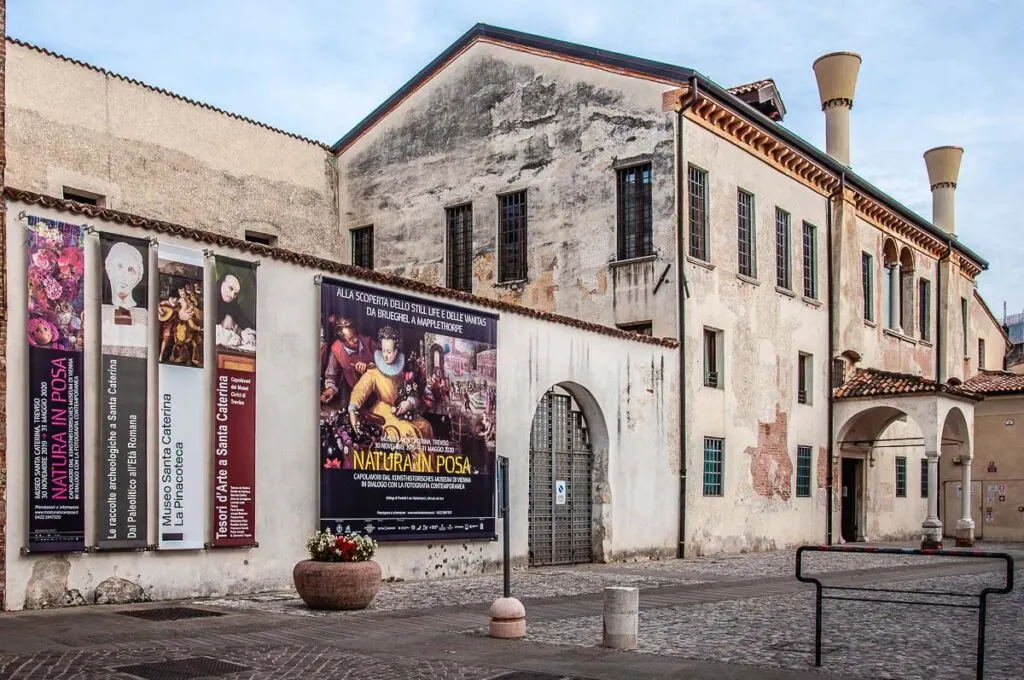
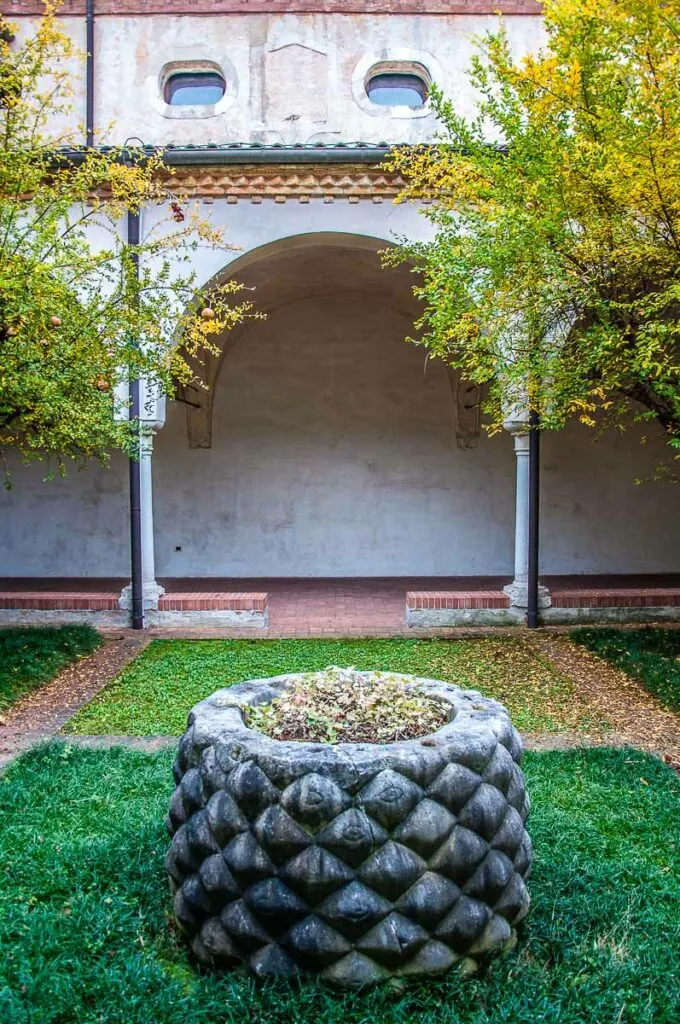
MUST-SEE CHURCHES IN TREVISO
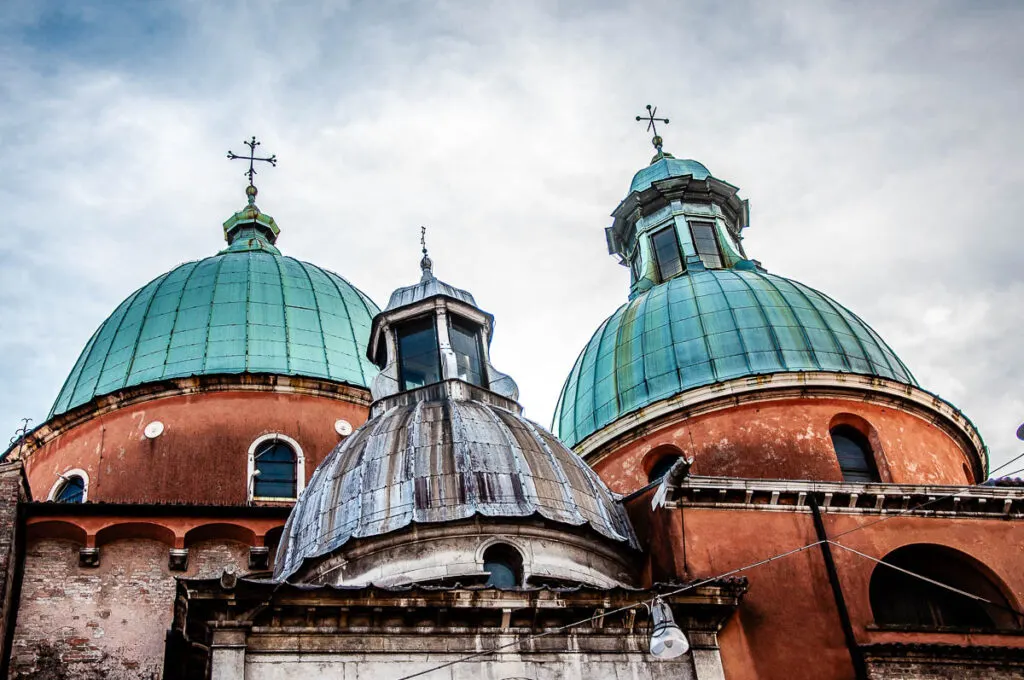
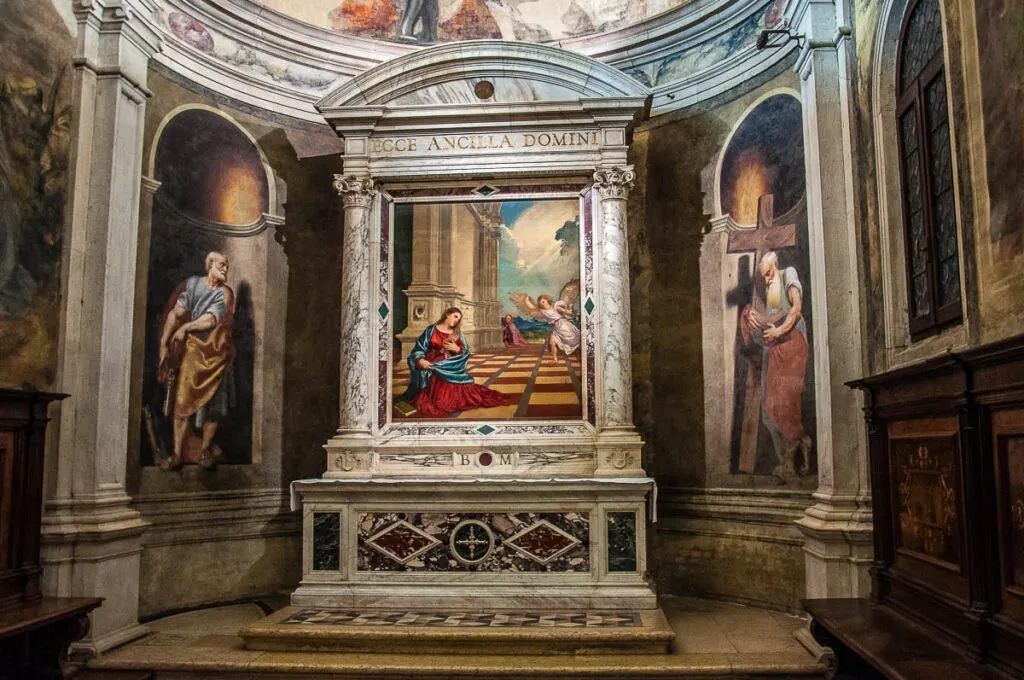
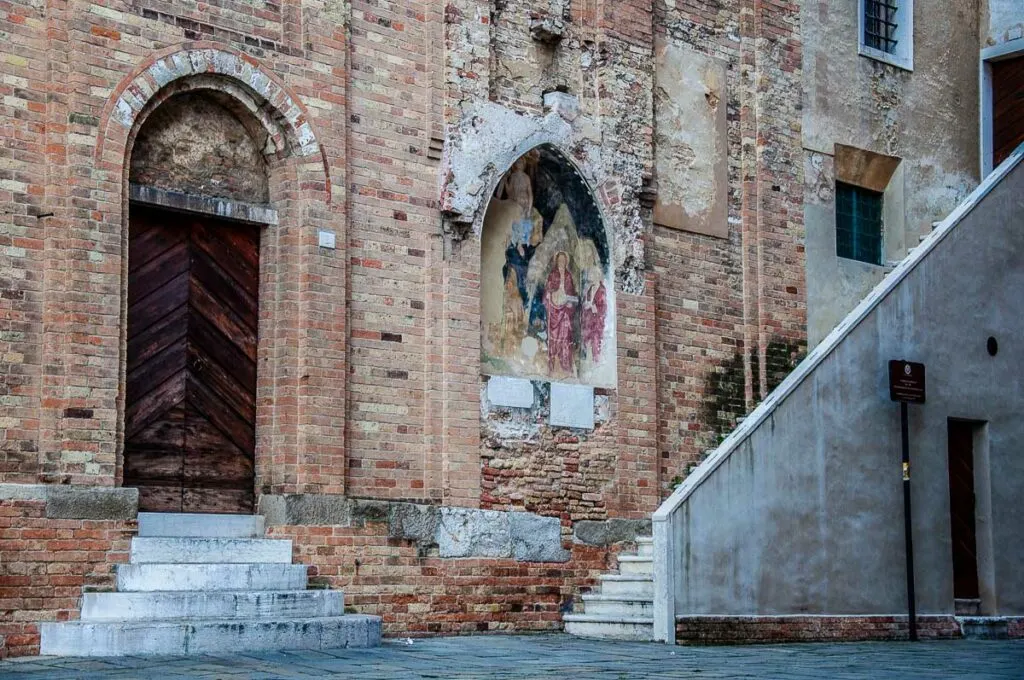
Just like every Italian city and town, Treviso is dotted with churches of different sizes and varying architectures. Here are the main ones and some hidden gems. All of them preserve not just excellent collections of religious art but also a myriad of local stories and traditions.
Cathedral of St. Peter the Apostle (Duomo) – from its Romanesque crypt to its imposing neoclassical facade, this enormous church represents a patchwork of architectural styles. It has seven domes and several chapels. Of these, particularly well-known is the Capella del Malchiostro – which houses frescoes by Pordenone and an Annunciation by Titian. The bodies of St. Liberalis (patron of Treviso) and St. Parisius are enshrined in the cathedral.
Church of San Nicolo’ – tall, imposing, and made of brick, this is an immense church first erected in the 13th century. Among its many artistic treasures is a 14th-century cycle of frescoes by Tommaso da Modena. It depicts 40 Dominican saints and scholars. Among them is Cardinal Hugh of Saint-Cher who is shown wearing spectacles – the first depiction of eyeglasses in the history of art.
Church and Convent of San Francesco – it was founded in the 13th century by monks sent to Treviso by St. Francis of Assisi. This imposing brick building has a simple facade and streamlined structure – a prime example of the late Romanesque/early Gothic styles. Inside you can see the remnants of medieval frescos as well as the tombs of Petrarch’s daughter Francesca and Dante’s son Pietro. After the Fall of the Republic of Venice in 1797, the church was used as a stable and storeroom first by Napoleon’s army and then by the Austrian troops.
Churches of Santa Lucia and San Vito – my favourite churches in Treviso! They are on the back of Piazza dei Signori and yet so very easy to miss right next to the city’s major landmarks. The Church of Santa Lucia has a beautifully frescoed vaulted ceiling. It’s quite poetic to see it illuminated by the flickering light of the candles.
HIDDEN GEMS IN AND AROUND TREVISO
Here are five hidden gems to enjoy discovering for yourself in and around Treviso. If you have the chance to see one or more of them, let me know in a comment below. Also, share with me any other secret corners and exciting discoveries you may make during your stay in this beautiful northern Italian city.
Late Antique Mosaic – next door to Treviso’s Duomo and Diocesan Museum, there is a small courtyard where you can admire the remains of a large circular mosaic from the Late Antiquity. Look closely at it and you will see small Cupids picking grapes as well as a female head which represents the season of autumn. It is thought that the mosaic was originally part of the floor decoration of a large patrician house which later on was transformed into an early Christian baptistery.
Fontana delle Tette – this is a rather curious sight in Treviso. It represents the upper half of the naked body of a woman. Her breasts would spurt streams of red and white wine for three days every time the city had a new podestà or ruler. The tradition started in 1559 and went on until the Fall of the Republic of Venice (of which Treviso was part) in 1797. As the symbol of the former rule, the fountain was badly mutilated by the invading Napoleonic troops. The original is now preserved behind protective glass inside the portico of the Palazzo dei Trecento. In 1989, a private citizen of Treviso commissioned the Peruvian sculptor Manuel Miranda to make a copy using Istrian stone. It was installed in a small courtyard – the Galleria della Strada Romana – where nowadays the fountain figure’s breasts produce streams of water.
Teatro Mario del Monaco – if you are staying in Treviso overnight, you can enjoy a performance in this beautiful Italian theatre and opera house. Its history stretches back to the 17th century. If you click on the link and scroll down to the end of the page, you can enjoy a virtual tour of the theatre’s splendid environment.
Tipoteca – about 30 km away from Treviso, discover Italy’s most important museum dedicated to the art of printing and typography. Here you can see ancient printing machines, consult over 5,000 books in the on-site library, and take part in a workshop helping you develop skills in fields such as typesetting, letterpress printing, and bookbinding.
Possagno – just over 40 km away from Treviso, stands a small village guarding some of the grandest buildings on this side of Italy. All of them are united by the creative genius of Antonio Canova – the most renowned neoclassical Italian sculptor. Put a few hours aside to explore his birth house, Gypsotheca, and final resting place in the Tempio Canoviano in Possagno. You can also combine it with a visit to nearby Asolo and/or Castelfranco Veneto.
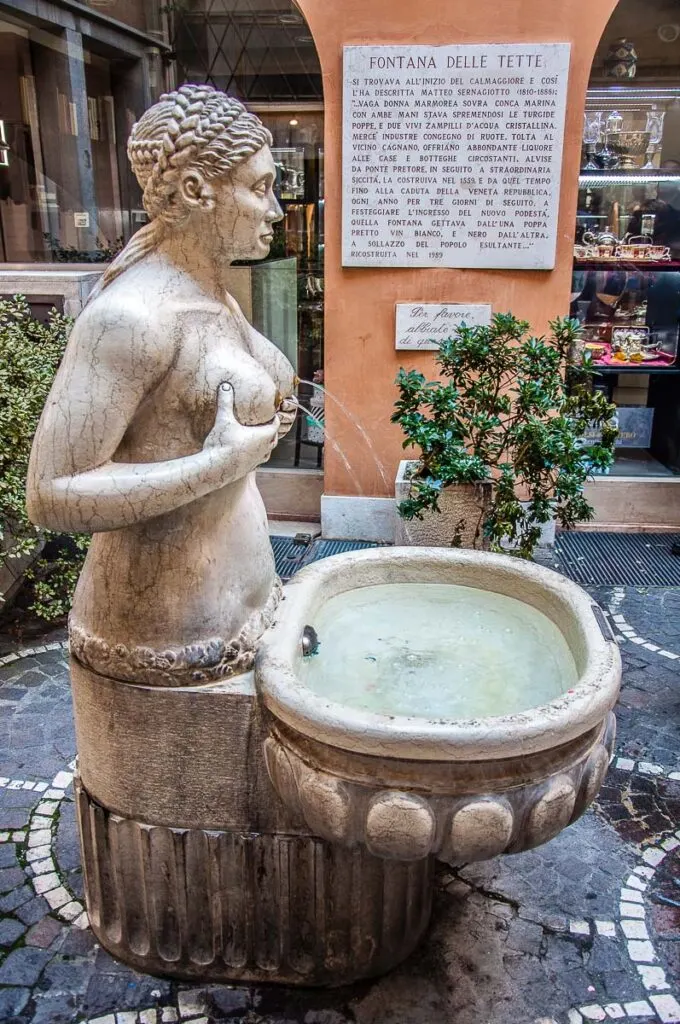
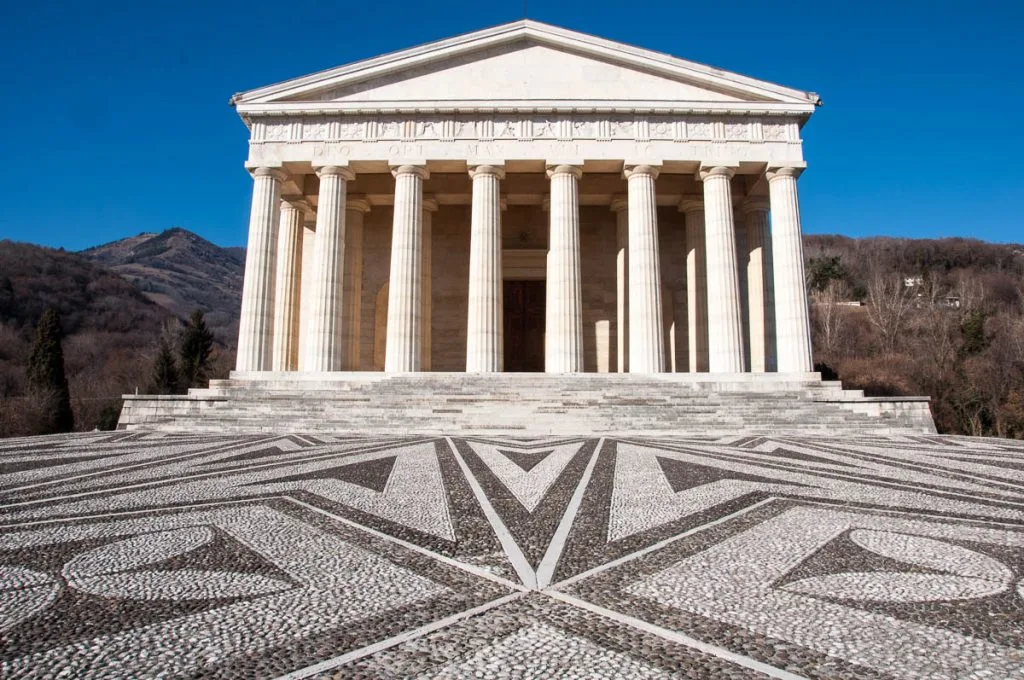
BEST GUIDED TOURS IN AND AROUND TREVISO
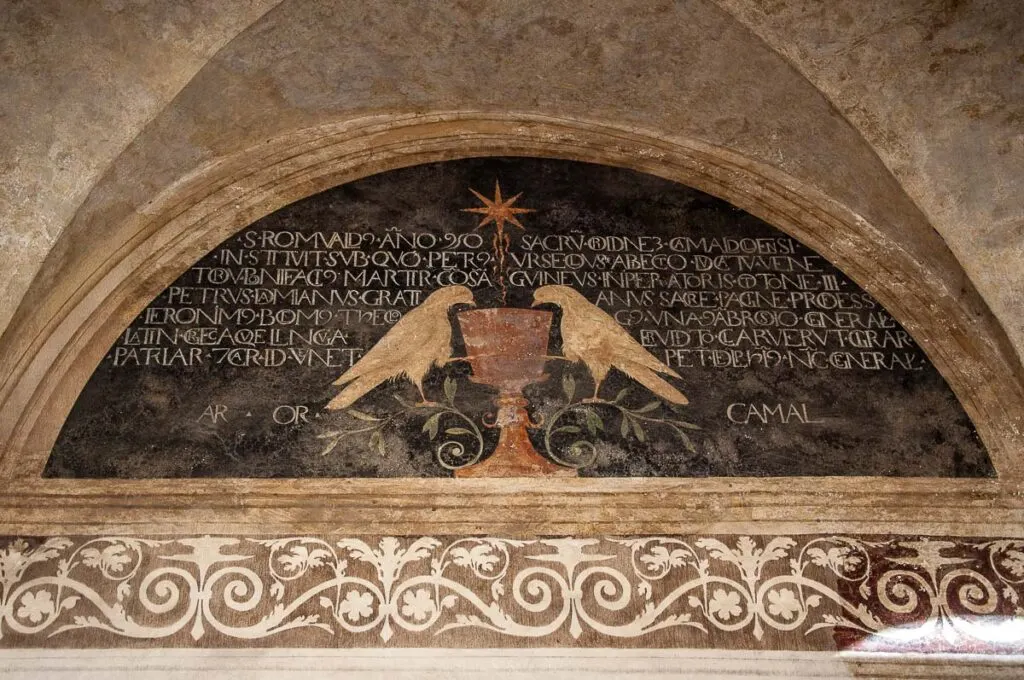
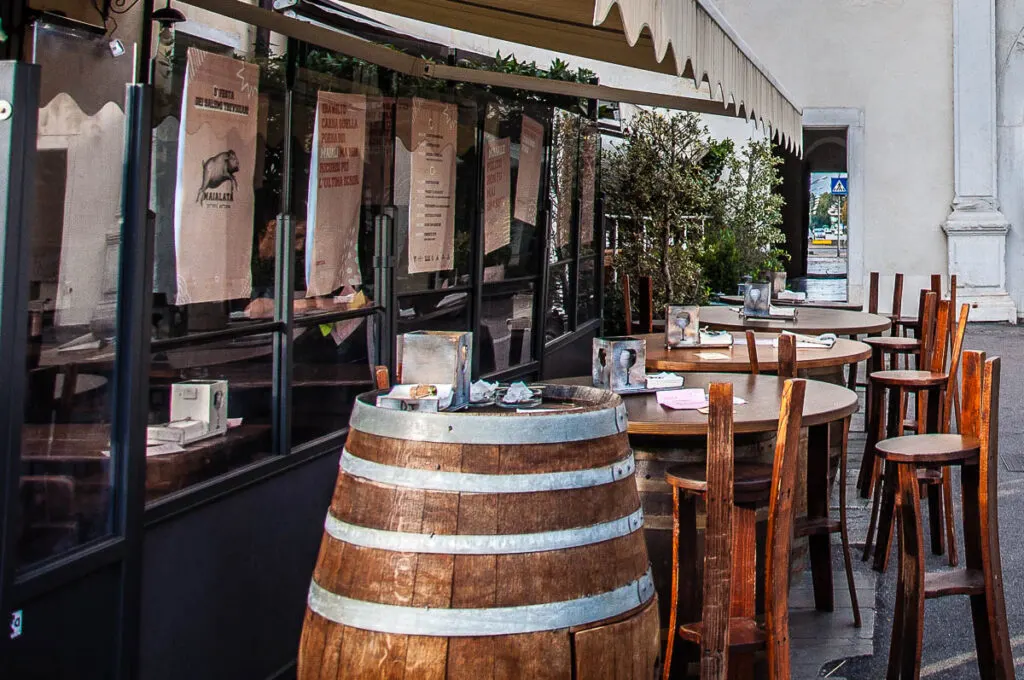
Booking a guided tour in and around Treviso with a reputed tour guide or travel company is a shortcut to getting to know on many different levels this exciting and often overlooked Italian city and its surroundings. It’s like stepping through a secret door to discover Treviso’s best corners, hidden gems, delicious food and prosecco which otherwise may be difficult to come across one by one on your own.
If you are short of time, want to experience things in a lively company or simply want to hear local authentic stories from the people who know them, a guided tour or an organised activity could be a great way to enjoy even more your stay in Treviso.
Here are some of the best and most highly recommended tours to take in Treviso organised by category:
- Sightseeing: Treasure Hunt ‘Blood Red Love’,
- Food: Pasta and Tiramisu Class, Dining Experience at a Local’s Home, The Art of the Italian Aperitivo, Street Food Tour in Treviso
- Prosecco and Wine Tasting: Prosecco Tasting in Valdobbiadene, Tour and 3 Wines Tasting in the Prosecco Hills, Prosecco Hills Tour with Wine Tasting and Lunch, Private Prosecco Tour All Inclusive
Alternatively, select directly local tours and activities in Treviso on GetYourGuide, Viator, and Tiqets.
If you prefer a custom-made tour for you and your travel companions, then you can contact one of the official tour guides of the Province of Treviso to see how they can meet your requirements.
BEST DAY TRIPS FROM TREVISO
Treviso is a great base for explorations of the northeastern corner of Italy. If you choose to spend more than a couple of days in this beautiful small city, make sure that you venture out to visit both world-famous destinations and little-known hidden corners of natural beauty and historic importance.
From cities of art to the gateway to the Dolomites, from medieval walled towns to the UNESCO-inscribed Prosecco Hills, Treviso offers quick access to many of the most authentic places of Italy which remain off the beaten track. Here is a shortlist:
Cities of Art – Venice but also Padua, Vicenza, Pordenone, and Udine are only a short train ride away from Treviso. All five cities have a lot to offer to the lover of history and art and have exceedingly beautiful historic centres.
Medieval Walled Towns – Asolo, Castelfranco Veneto, Cittadella, Conegliano, Portogruaro, and Serravalle are only some of the beautiful historic towns a short drive away from Treviso. Nestled in the lush countryside, they offer unexpectedly rich lists of things to do coupled with excellent cuisine and artistic heritage. Check this blog post for more small-town destinations to visit from Treviso: 31 Prettiest Small Towns in Veneto, Italy
Prosecco Hills – carpeted with vineyards producing award-winning prosecco, this beautiful area of softly undulating hills is as pretty as a picture. Visit from Treviso by car or by organised tour to find out why it was inscribed on the UNESCO World Heritage List in 2019. Alternatively, get the train from Treviso to the town of Conegliano at the heart of the prosecco-producing area and enjoy a glass after visiting the splendid local sights.
Dolomites – by car, Treviso is only about an hour away from Belluno – a city known as the Gateway to the Dolomites. Once there, you can explore its hilltop historic centre before heading out of town for a nice hike or a visit to a nearby lake in the majestic mountain range. Have a look at this blog post for ideas: Cadini del Brenton and Cascate della Soffia – An Easy Hike Near Lake Mis in the Dolomites, Italy
Seaside Destinations – in about an hour by car you can reach several seafront towns and beach resorts from Treviso. Among them are Jesolo, Eraclea, and Caorle. Take your pick on a sunny day when you feel like a swim in the Adriatic Sea.

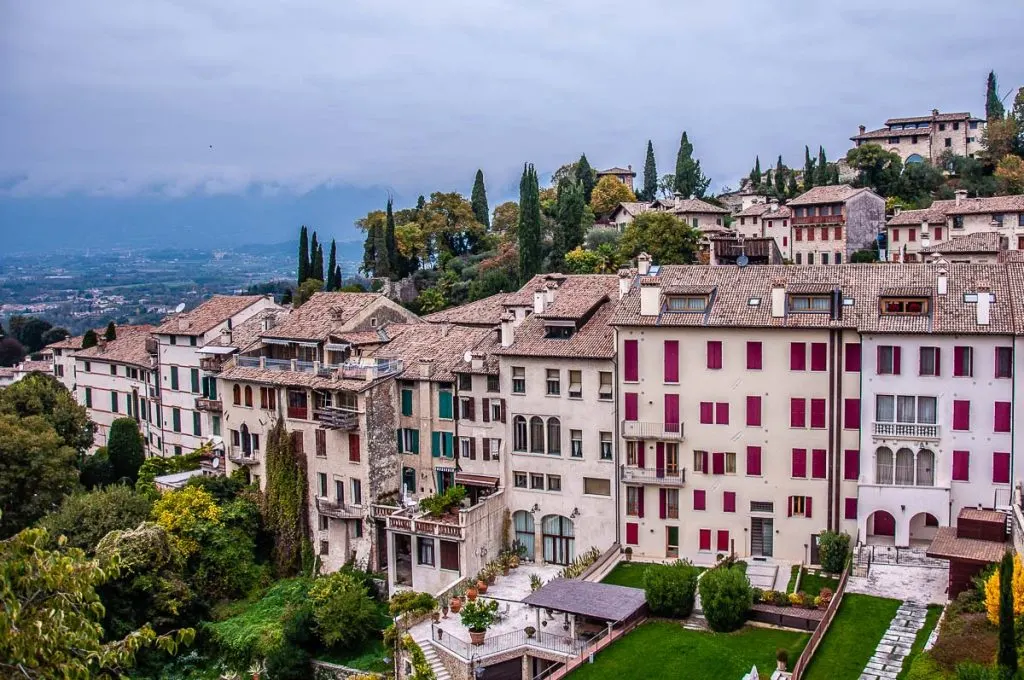

WHAT TO BUY FOR A TRIP TO TREVISO
BEST TRAVEL GUIDES FOR VENETO AND ITALY
5 CURIOUS FACTS ABOUT TREVISO

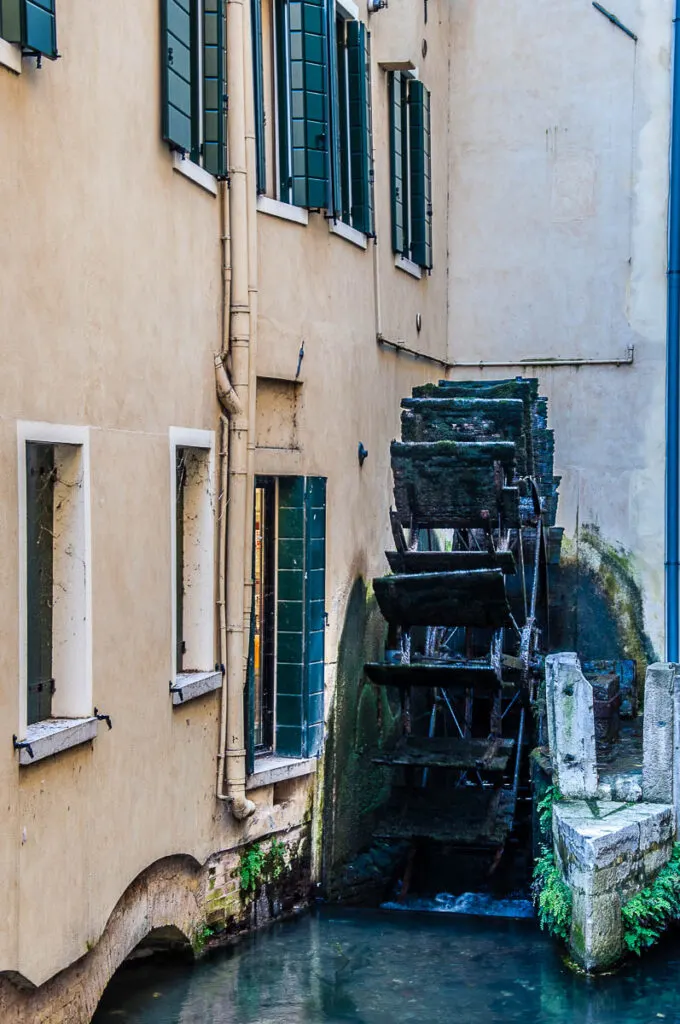
1. The famous fashion house Benetton was founded in 1965 in the Province of Treviso. The Benetton family maintains close connections to the city and among other things sponsors the Treviso rugby team.
2. The patron of Treviso is St. Liberalis (in Italian, San Liberale). Born in the 4th century in a noble family, he was a Roman soldier who converted to Christianity. As such, he opposed the Arian heresy and towards the end of his life became a hermit. His relics are enshrined in Treviso’s Duomo, where you can also see him depicted in frescos and as a marble statue. A silver sculpture of the saint is also preserved in the city’s Diocesan Museum. Still on the topic of religion, two of the Popes of the Catholic Church hailed from the Province of Treviso. One is Pope Benedict XI who was born in the city of Treviso in 1240. The other is Pope Pius X – born in 1835 in the small town of Riese (nowadays known as Riese Pio X) about 30 km away from Treviso.
3. Treviso has a curious connection to Dante. The great Italian poet stayed in the town – then ruled by the feudal lord Gherardo III da Camino – after Dante was exiled from Florence in 1302. Gherardo’s palatial house stood at the same spot where nowadays you can visit the Museum of Santa Caterina. Dante was so grateful to his host that he even mentioned Gherardo and his daughter Gaia – a renowned poetess – in his Divine Comedy, one of the world’s greatest pieces of literature. A mention was also made of one of Treviso’s bridges as the point where the Cagnan Grande flows into the River Sile. Nowadays, the locals call this particular bridge Ponte Dante and there is a small monument next to it commemorating the Divine Comedy mention.
4. From the 13th century onwards, Treviso was known as the Urbs Picta – the Painted City. This was on account of the splendid frescoes that decorated the numerous palaces and porticoes here. Nowadays, you can see the remnants of these once glorious pictorial decorations. Although quite faded and cracked in places, they still give you a good idea of how resplendent Treviso must have been during the Middle Ages and the Renaissance. Have a look at this map which documents the painted houses in the historic centre. It may give you many ideas for places you simply need to see in town.
5. In the past, the water provided by Treviso’s canals was used to operate several watermills. They were a major provider of flour for the Republic of Venice, helping to feed the 150,000 people who lived in the Venetian Lagoon. Walking around town nowadays, you will see large paddle wheels installed next to several historic houses. This is a picturesque throwback to the days when the mills were instrumental in Treviso’s economy. Several of these wheels stand along the Cagnan Grande. For example, you may spot them near the Isola della Pescheria and the Church of San Francesco.
MORE INFORMATION ABOUT TREVISO AND VENETO
If you are considering a trip to Treviso in particular and the Northern Italian region of Veneto in general, you may want to also have a look at the following categories and posts on my blog:
- Veneto – a full list of all my blog posts about this must-see region in Italy
- Top 15 Places to Visit in Veneto, Italy
- 15 Reasons to Visit Veneto, Italy Beyond Its Capital Venice
- 10 Cities of Venice and Veneto to Visit in Italy and What to See in Each
- 31 Prettiest Small Towns in Veneto, Italy
- 8 Most Beautiful Villages to Visit in Veneto
- 30 Days of Adventures in Veneto, Italy
- 15 Most Colourful Places in Veneto
- Gorgeous Lakes in Veneto
They are based on my first-hand experience of visiting these destinations in Italy and provide lots of practical information to help you plan your travels.
In addition, for the most up-to-date information about events and local sights, keep an eye on the official tourist information websites of Treviso and the Region of Veneto.
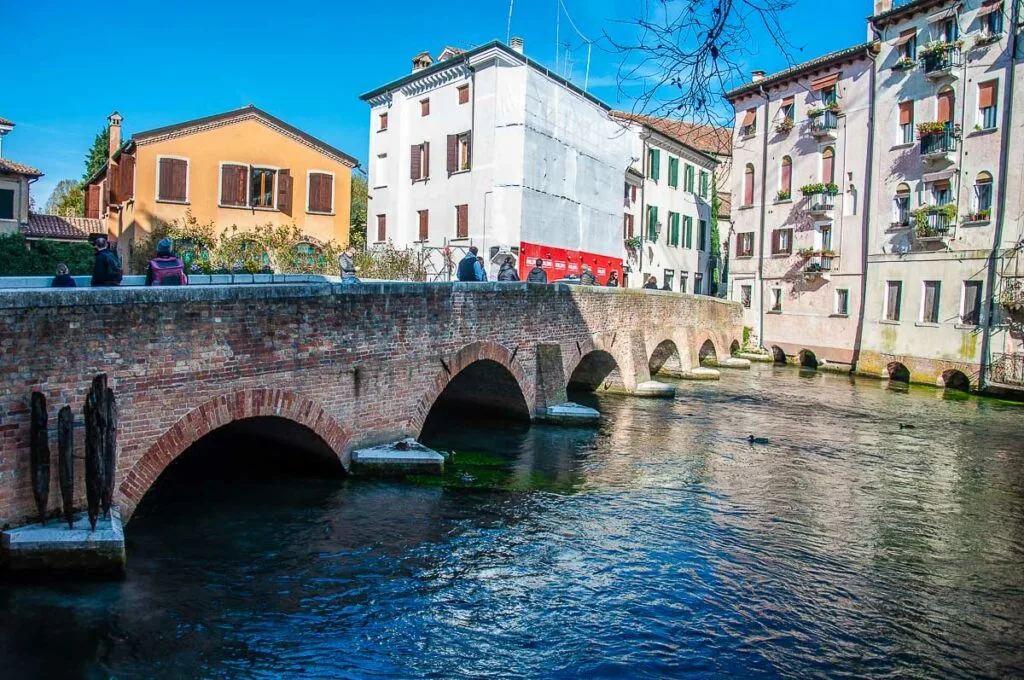
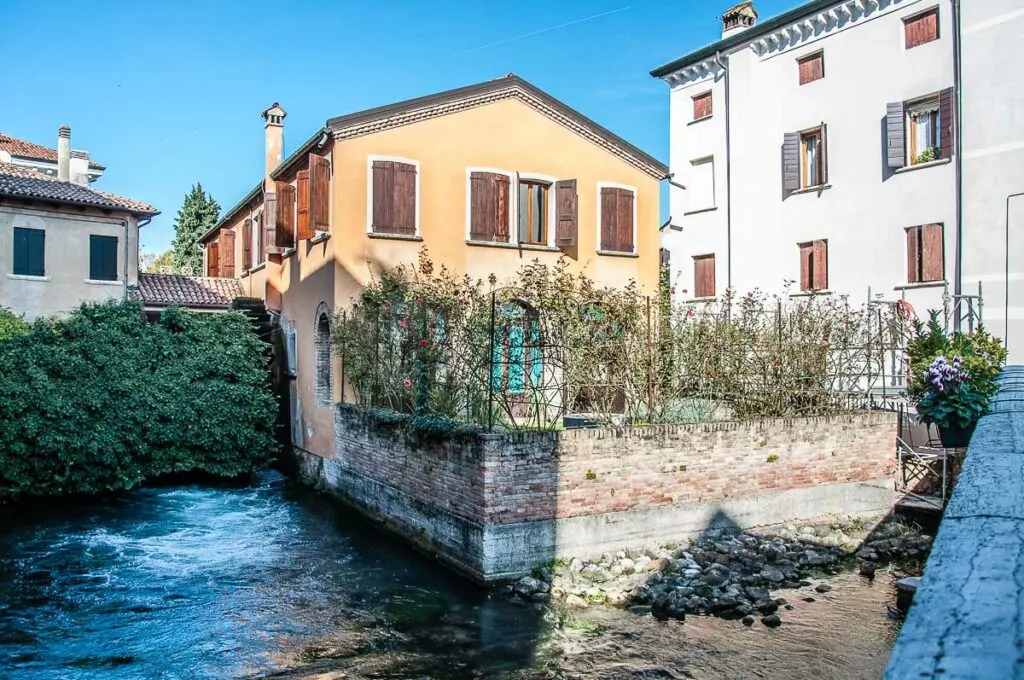
MORE INFORMATION ABOUT ITALY
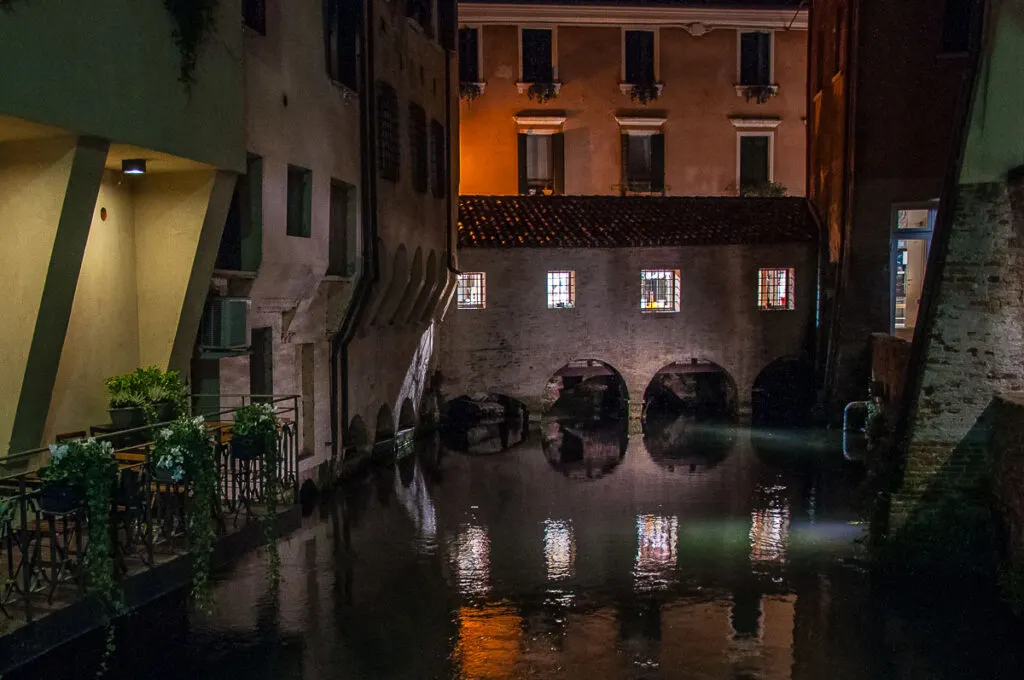
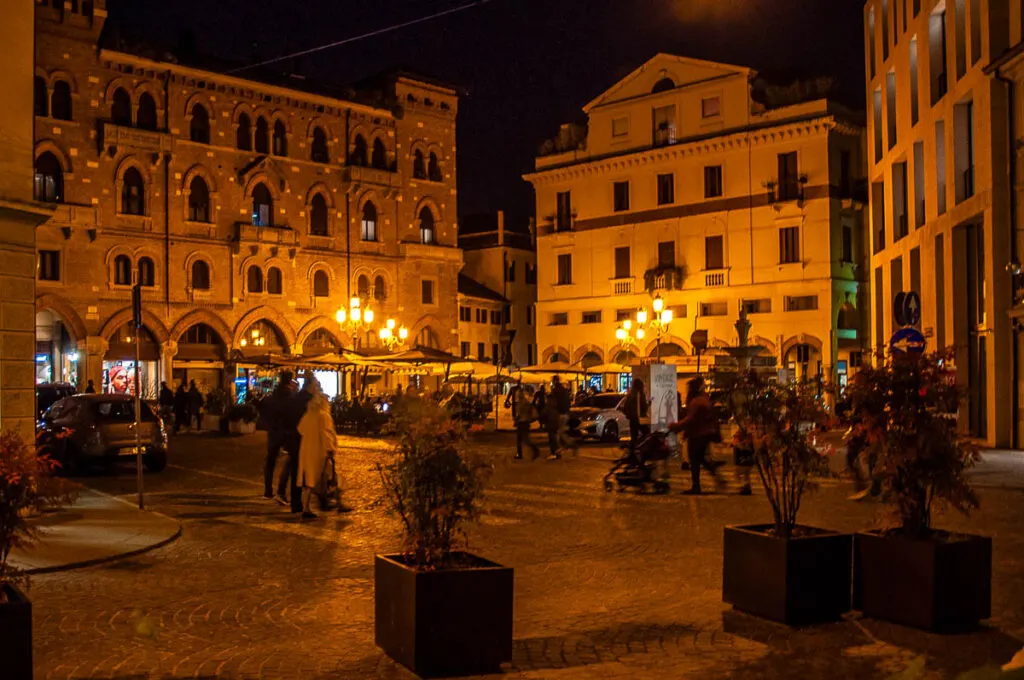
I have been blogging about travel in Italy for almost ten years now providing detailed and first-hand tried and tested information about the best things to do in this beautiful country. It’s all based on my close to twenty years of visiting Italy solo and with my family. Six of them, we actually spent living in Vicenza in the north of the country.
If you are after meticulously researched and illustrated with dozens of original photos articles about Italy, have a look at the following categories and blog posts:
- Italy – a full list of all my blog posts about Italy
- 10 Reasons to Visit Northern Italy
- Lombardy, Trentino, Emilia Romagna, Marche, Umbria – full lists of all my blog posts about these Italian regions
- Venice, Naples, Padua, Lake Garda, Lake Como, Milan – detailed travel guides and full lists of all my blog posts about these must-see destinations in Italy.
In addition, right at the end of this travel guide for Treviso, you will find a list with links to my most popular blog posts about many beautiful and exciting cities, towns, and regions to visit in Italy. So, just scroll down and then click on the ones you want to know more about.
Finally, Italy’s official tourism website is a great source of the latest news about travel in Italy. Otherwise, this is one of the best guidebooks about Italy.
THANK YOU FOR READING!
Have a look also at my ultimate travel guides for Venice, Naples, Lake Como, and Lake Garda.
For more useful information like this, please, like my blog’s page on Facebook and Instagram and subscribe to my strictly no-spam newsletter.
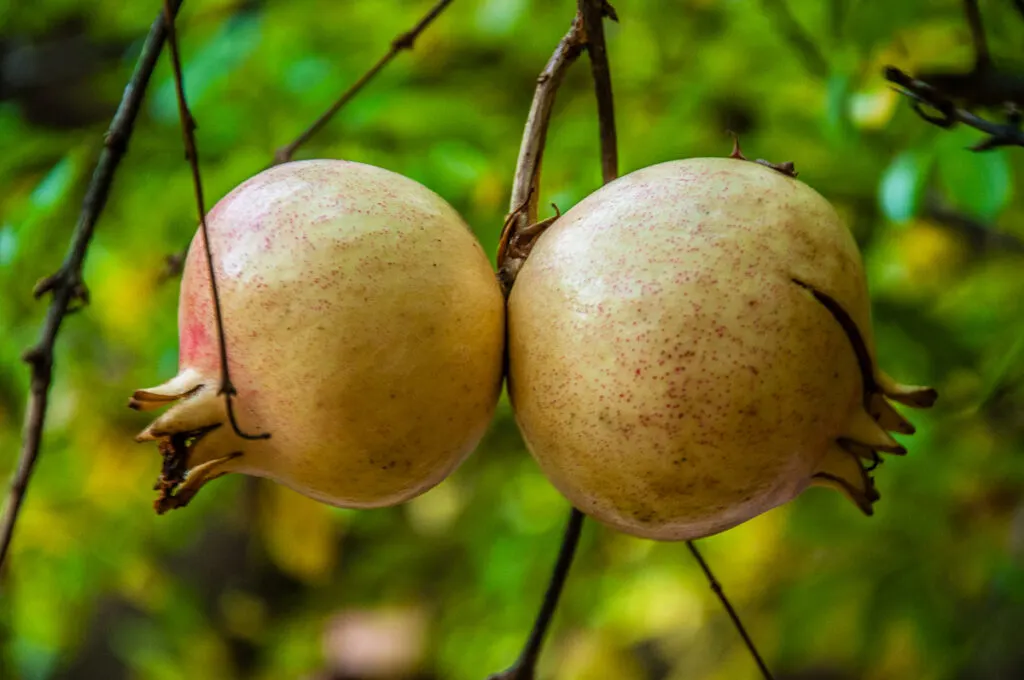
TRAVEL TOOLS
Get Ready for Your Trip to Treviso in Italy
Get a guidebook from Amazon.
Buy plane tickets, train tickets, and bus tickets through Omio.
Research accommodation on Booking.com.
Select local tours and activities on GetYourGuide, Viator, and Tiqets.
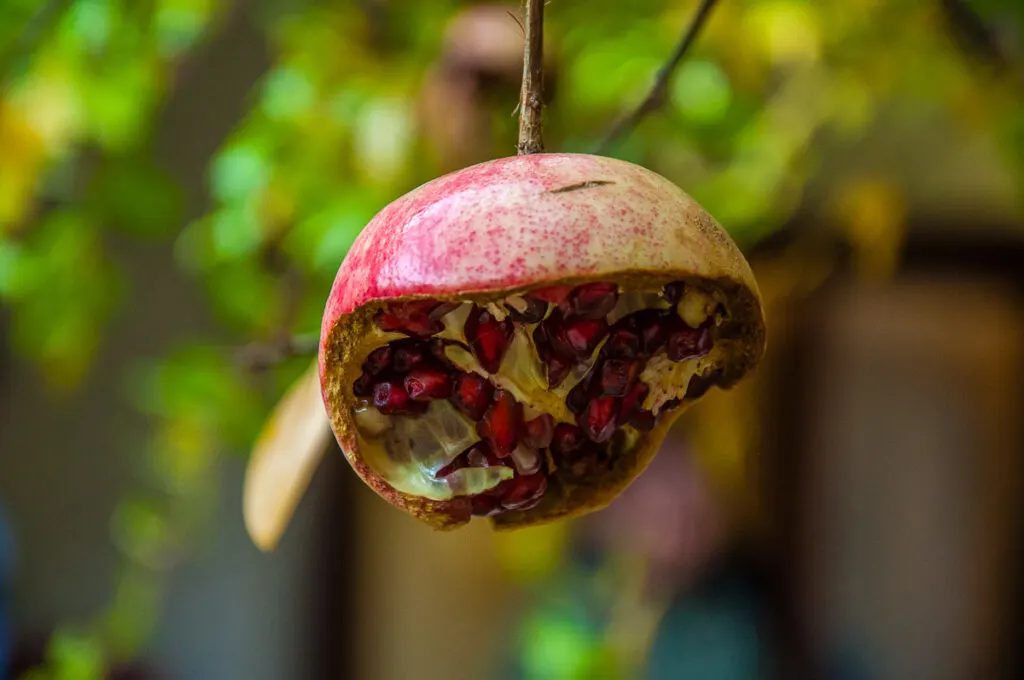
EVEN MORE HELPFUL INFO ABOUT ITALY FOR YOU
Best of Italy: Italian Piazzas, Italian Markets, Accommodation for Every Budget, Best Times to Visit Italy, Italy in Summer, Italy with Kids
Italian Food: Best Italian Food Gifts, Cheap Italian Food, Rules of Italian Breakfast, Italian Breakfast Foods
Italian Coffee: Italian Coffee Culture, Italian Coffee Drinks, History of Coffee in Italy
Christmas in Italy: Fun Facts, Things to Do, Italian Nativity Scenes, Panettone, Christmas Guide
Northern Italy: Best Cities to Visit, Major Airports, Reasons to Visit
Lake Como: Ultimate Travel Guide, Best Towns, Best Things to Do, How to Get to Lake Como, Milan to Lake Como, Best Airports, Photos of Lake Como
Lake Garda: Ultimate Travel Guide, Best Towns, Desenzano del Garda, Lazise, Riva del Garda, Malcesine, Torri del Benaco, Punta di San Vigilio, Campo di Brenzone, Borghetto and Valeggio sul Mincio, Map of Lake Garda, Getting Around Lake Garda, Lake Garda with Kids, 8 Best Airports, Venice to Lake Garda, Verona to Lake Garda, Milan to Lake Garda, Bologna to Lake Garda
Venice: Ultimate Travel Guide, Essential Tips, Things to Do, Major Landmarks, Hidden Gems, How to Navigate Venice, Venice in a Day for Art Lovers, Train Stations, Nearest Airports, Best Tours, Beaches of Venice, Quotes about Venice, Boats in Venice, Haunted Venice, Day Trips from Venice, Arco del Paradiso
Verona: Things to Do in One Day, Verona Opera Festival, Day Trips from Verona, Romeo and Juliet Itinerary, Verona to Venice, Verona to Milan
Padua: Things to Do in One Day, 101 Facts About Padua, 10 Reasons to Visit Padua, Day Trips from Padua
Vicenza: Things to Do, Day Trips from Vicenza, Best Museums, The Beauty of Vicenza
Veneto: Top Places to Visit, Unique Adventures, Most Colourful Places, Mysterious Places, Most Beautiful Lakes, Reasons to Visit, Main Cities, Prettiest Small Towns, Most Beautiful Villages
Lombardy: Best Cities and Towns, Reasons to Visit, Brescia
Friuli Venezia Giulia: Venzone, Most Beautiful Villages
Emilia Romagna: Bologna, Ravenna, Comacchio, Most Beautiful Villages
Marche: Reasons to Visit, Gradara, Frasassi Caves, Temple of Valadier
Umbria: Reasons to Visit Perugia
Campania: Naples Travel Guide








